Want to know secret conversion tips that will skyrocket your sales through effective Conversion rate optimization? Well, I will unveil all the secret conversion optimization tips that will help you optimize your website’s conversion, but before that let’s talk a little bit about my journey about how I discovered the conversion tips and tools that will ensure your conversion rate will go upward.
Back in 2016. I just joined a company. I was fresher. My departmental head called for a meeting. The agenda was, how we can boost sales through our website.
In that meeting, I heard a term for the first time – CRO. I had no idea what CRO even means. Later I came to know that CRO means Conversion Rate Optimization. It’s a process to optimize the customer journey toward taking an action on the website.
After the meeting, My boss called me and asked me to find ways – how we could optimize our sales conversion rate.
On that project, I learned a lot of conversion rate optimization tips, tricks & strategies. Many years passed by and those strategies still work. Some new tools came into the digital marketing landscape but the core remained the same.
A lot of readers of our blogs are business owners, marketing professionals, or web developers, who also want to achieve the most important KPI – SALES!
Key Performance Indicators (KPIs) show how well a company is meeting its objectives. Conversion rate is an important key performance indicator (KPI) or metric for determining how many leads convert to sales.
If you want to know the ins and outs of the CRO, you are in the right place. I will walk you through the process of calculating the sales conversion rate in this article. It will provide useful marketing insights, conversion optimization tips as well as some pointers on how to increase those numbers.
Conversion Rate
People launch their website but without making any marketing effort, the website maybe falls behind in the search engines, or can’t satisfy the customer needs. Those ultimately affect the profitability of the business. This is where conversion rate optimization comes in.
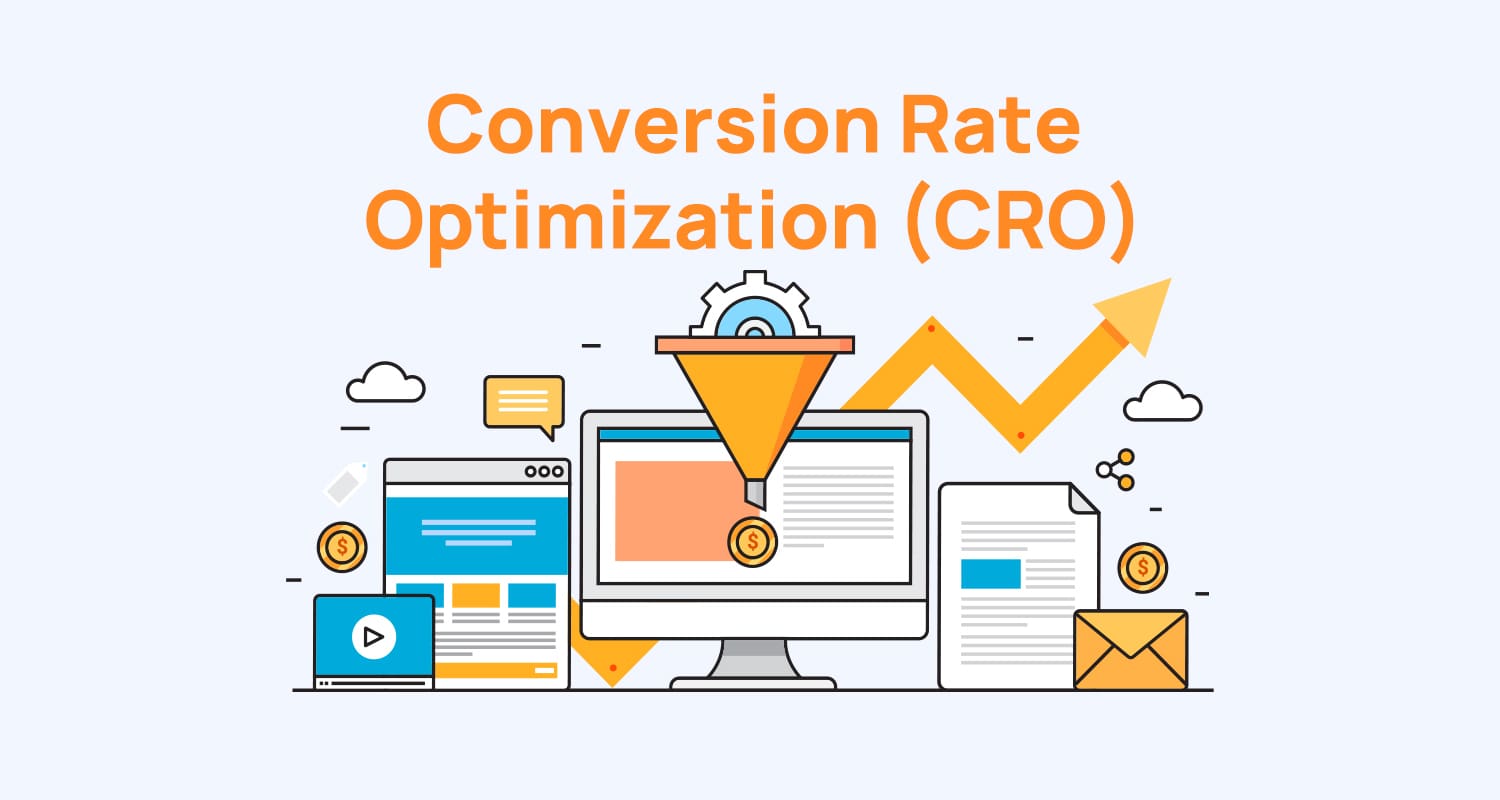
What is Conversion Rate?
After running any marketing campaign, the conversion is the major Key Performance Indicator (KPI) to track. If you can identify the bottleneck of your conversion, you can refine the marketing strategies, improve the content marketing process, or can identify the behavior behind the cart abandonment by your potential customers.
You can also convert more of your website visitors into customers by using web analytics and conversion tracking tools like Google Analytics.
The more conversion you get within a period of time, the higher your conversion rate is. Conversion Rate is the number of people who took an action on your website, divided by the total number of people who have reached the action point.
Taking people to that action point is the sole responsibility of the marketing team. For example, a company did a webinar where all the participants are their potential customers. They collected the contact information of the audience. That contact information is called the lead.
After that, the sales team will reach those leads and will try to convert those leads to paying customers.
For example, if you get 1000 leads in a month and have 100 sales, the conversion rate here is 1000 divided by 100, which is 10%.
What is a Good Conversion Rate?
The average rate is determined by a variety of factors, including your niche, target device, and so on.
Despite this, the average rate is only between 1% and 3%. This means that the vast majority of your site’s visitors will never take the desired action. This is normal because not everyone who visits your website intends to buy.
Your goal should be to increase your conversion rate as well as the number of unique visitors. Keep your expectations in check, though.
The figure may appear to be low, but it is actually quite good. Assume you have 100,000 visitors and a conversion rate of 3%. This means that approximately 3,000 of your visitors have made a purchase.
There is no such thing as a perfect 100% conversion rate. Even 50% is nearly impossible. However, there are many Conversion Rate Optimization strategies to increase your conversion rate and reach double digits.
What is Conversion Rate Optimization (CRO)?
Conversion Rate Optimization is a Marketing Optimization Process that follows some steps to identifying and solving the problem users are facing toward taking an action in the website.
Conversion optimization studies visitor behavior and focuses on what drives a certain market group to connect with various marketing components in a particular way.
Conversion Rate Optimization is focused on pursuing more of your website visitors to perform the required action on a page, website, or campaign.
The appropriate Conversion Rate optimization methodology may provide fantastic results, but you’ll be astounded by the process by which these results are achieved using the fact-based, data-driven scientific approach we’ll present to you in this book.
How to Calculate the Conversion Rate?
You’ll need to do some quick math to figure out your conversion rate. A conversion rate is computed by dividing the number of times a goal is achieved by the number of people who had the chance to achieve that objective.
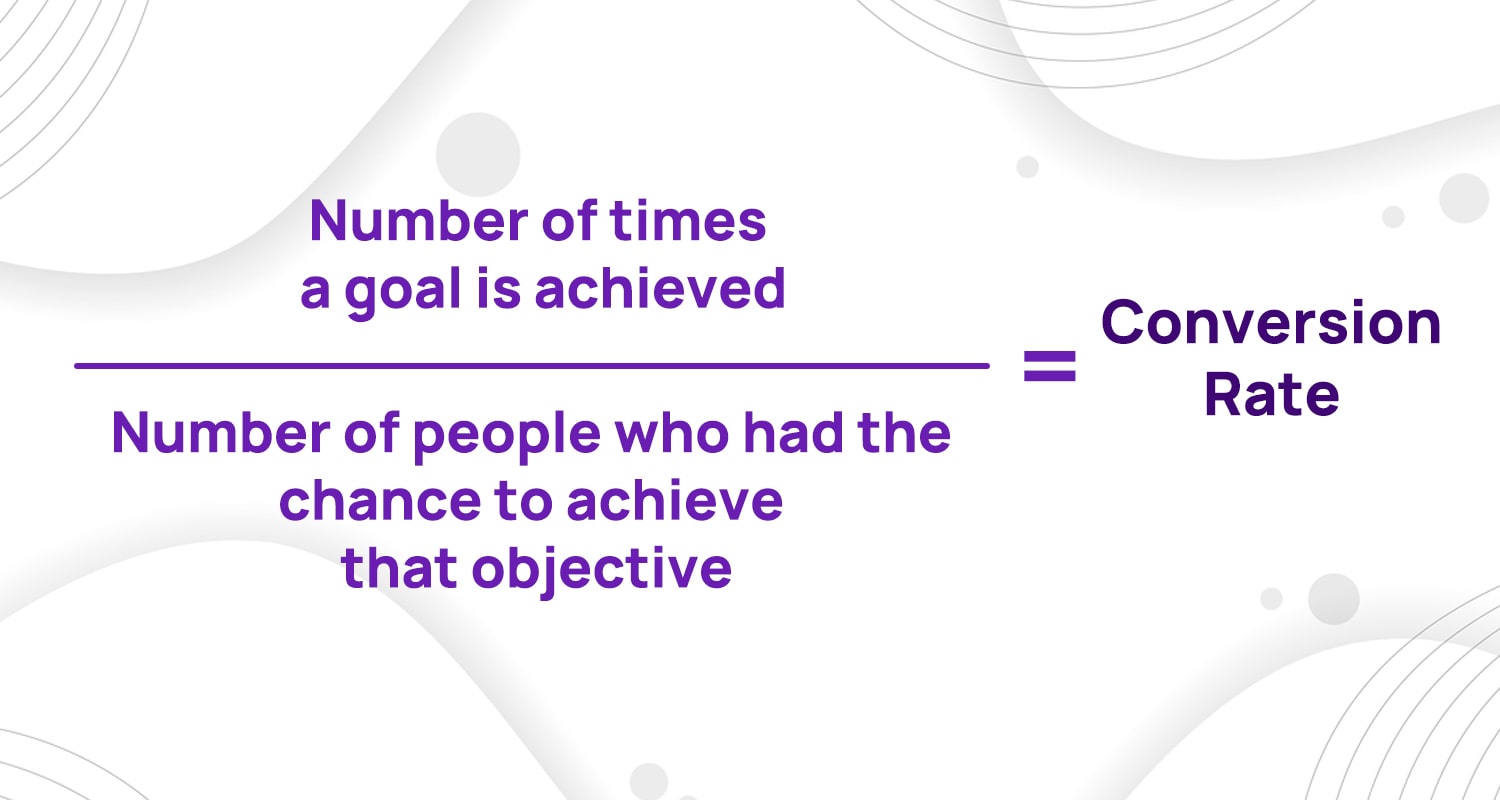
As an example, suppose you own an e-commerce website. The amount of visitors making purchases would be a crucial conversion for this site. If you made 100 sales last month and had 1,000 website views, your conversion rate would be 100 / 1,000 = 10%. Isn’t it simple?
It’s much easier if you’re utilizing Google Analytics. Many of Google Analytics’ default reports, such as audience, acquisition, and (of course) conversion reports, provide the conversion rate of your chosen audience group, channel, or objective.
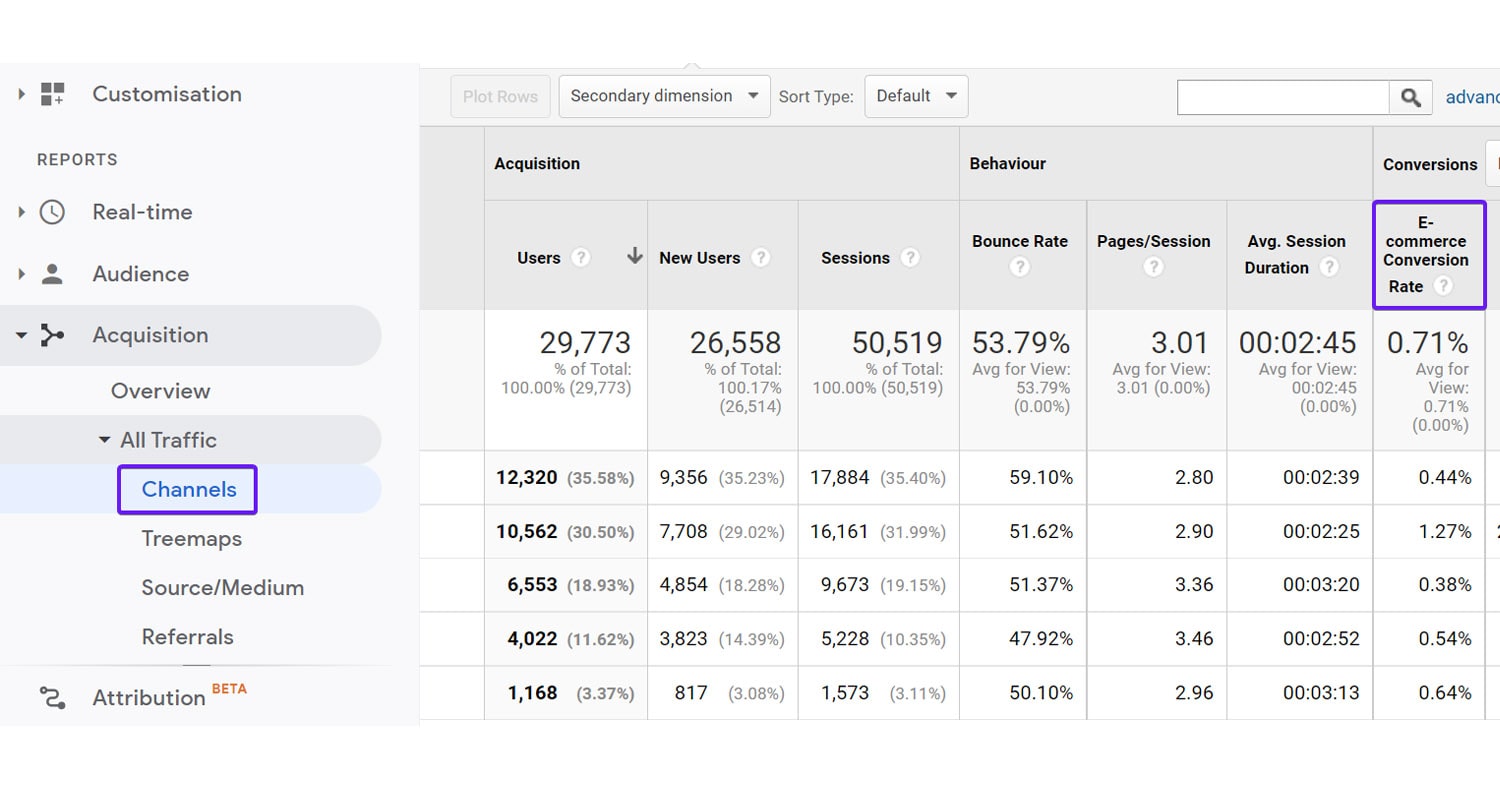
Why invest in Conversion Rate Optimization (CRO)
‘Why do conversion optimization? It is the cheapest and quickest way to enhance sales. Think about this:
If you’re currently converting at 1%, but can increase that to a mere 2%, you’ve doubled your sales.
Peep Laja, Conversion XL.
Businesses frequently become immersed in their day-to-day operational activities and have no time to closely monitor the performance of their website or app.
If you do not monitor and track your website/app on a regular (daily) basis, you may miss out on a few signals, resulting in a suboptimal conversion rate.
We’ve identified the top four indicators that you should be on the lookout for in order to determine when you’re ready to embark on conversion rate optimization initiatives:
Major User-Experience Improvement
CRO is primarily about the bottom line, but it also involves improving the way visitors interact with your website. Smoothing out any irregularities that can hinder your visitors from completing and converting ensures that customers get a simpler, more tailored user experience.
Happier customers are more likely not only to make a purchase but also to return for more – possibly bringing friends with them.
Reduce Bounce Rate & Growth in Customer Retention
More site visitors go through conversion funnels and fewer get “bounce” off the site, when conversion rates improve (traffic bounce is, visit only one page and exit).
The debate over whether bounce rates affect search engine rankings is heated, with some SEO experts claiming they do and others claiming they don’t.
Nonetheless, we want site visitors to visit multiple pages and consume our content, so lowering the bounce rate as a by product of conversion optimization is fantastic!
Higher ROI
One of the most significant advantages of implementing a CRO campaign is that every adjustment you make to your site that enhances conversions is an incremental success for your company.
For example, an online eCommerce company that wants to improve its customer experience so that purchasing products is simple and convenient for its clients would greatly benefit from CRO. How?
By doing an A/B test, if it is able to improve its conversion rate by even 3%, it means that it is gaining 3% more money on a daily basis. Meanwhile, if it has a high volume of sales, a 3 percent increase in sales can effectively convert into hundreds of thousands of dollars in more revenue for the company. The name of this eCommerce company is ShowPo.
Cost-Efficiency
When calculating the Customer Acquisition Cost (CAC), we take the entire amount spent on marketing in a given period and divide it by the number of customers acquired during that same period of time.
Here’s the universal formula for this – CAC = Sales & Marketing Expenses / New Customers
Naturally, implementing Conversion Rate Optimization(CRO) results in more conversions for the same cost; results in CAC decreasing in half.
For example, if the total marketing cost was $10,000 and the outcome was 100 consumers, the CAC would be $100 per customer.
If we use CRO to boost conversions to 150 in a given month, the CAC drops to $66.67 per customer.
That’s the magic of Conversion Rate Optimization.
Conversion Rate Optimization Tips & Strategies to Apply
Setting and testing the proper hypothesis inside your CRO plan is essential, but there is also some more stuff you can do to increase your conversion rate. At the page level, there are a lot of components that can support you in grabbing your customer’s attention. Here I have shared the major conversion optimization tips.
Let’s dig deep at each of the techniques available to optimize conversion.
Create Text-Based CTAs Within Blog Posts
Text that links to the landing page of the offer you’re promoting. Keep anchor language simple and obvious so readers know what they’re clicking – action words like “download” and “access” are helpful here.
Banner blindness is a true phenomenon that occurs when people develop a habit of overlooking banner-like information on websites. This lack of focus, along with the fact that site visitors don’t usually read all the way to the bottom of a blog article (rather, they “snack” on content), necessitates a different approach.
This is where Anchor-Text-CTAs can make a change.
Regular end-of-post banner CTAs contributed an average of only 6% of the leads generated by the blog posts in HubSpot’s limited test of 10 blog posts. but the anchor-text CTA contributed up to 93 percent of the leads created by the post.
Keep “The Fold” in Mind
Hold on…What does this “Fold” mean?
The term “fold” in a web page is a legacy from the newspaper industry. Newspapers arrive folded into a nice bundle, making a bunch of large printed pages easy to transport.
The top half of the front page is the part of the package that you view first. The area that appears “above the fold”. In the modern world, wherever you see at a glance when you visit a website, is “above the fold”.
However, when visitors arrive, they must make a decision: Is this page worth my time and attention?
So, your question now may be, What I must put in the “Above the Fold” area of my website, right?
1. A title, sometimes called Header
2. An engaging subtitle, to support the header (Subheading)
3. The Call-to-Action.
4. Use a Compelling Image. Sometimes called “Hero Image”.
When connected to relevant anchor text, such as vital keywords, CTAs provide direct access to what the reader is seeking, before they scroll down the page or skim and then click off. For example, on the ElementsKit landing page, we used dual-CTA. Explore our widgets and Pricing. First time vistors must get the valuable information within 5-sec browsing.
Those are the basic components to include in “Above-the-Fold” area on your website. Besides those, you can provide a coupon code, a trust badge, a testimonial from big-name, or anything. Test that element and if it has any positive impact on your website – retain it there.
Add Pop-Ups Based on Different Objectives
There are numerous varieties of pop-ups, each of which is more or less effective based on your plan. Indeed, some sectors necessitate more aggressive techniques than others: it all relies on your marketing personas and budget.
Entry pop-ups: These are pop-ups that appear when your visitors land on your website. Although they may be effective in specific situations (language option, age limitation, disclaimer, extraordinary offer, major news, etc). They are often disliked by your visitors due to their invasive character.
Scroll-based pop-ups: Scroll-based pop-ups are typically activated after a visitor has scrolled to a certain depth (e.g 25% of the page for example). Because these pop-ups only appear after proof of interaction, they produce somewhat better results and perform particularly well on articles and blog posts, however they may also be used on eCommerce websites.
Interaction-based pop-ups: These pop-ups are useful for marketing teams interested in providing tailored experiences. Interaction-based pop-ups are generated when a visitor clicks or hovers over a certain element. In contrast to delayed or entering pop-ups, they enable your team to develop a personalized experience based on the behavior of your visitors.
Delayed pop-ups: Delayed pop-ups appear after a visitor has spent a specific period of time on your website. They, like scroll-based pop-ups, are only activated after proof of engagement. This type of popup is very effective on blog pages.
Exit-intent pop-ups: When a visitor is about to leave your page, exit pop-ups appear. These pop-ups are well-known in the eCommerce business as a powerful strategy for lowering cart abandonment rates. They can also be used to collect email addresses or generate leads.
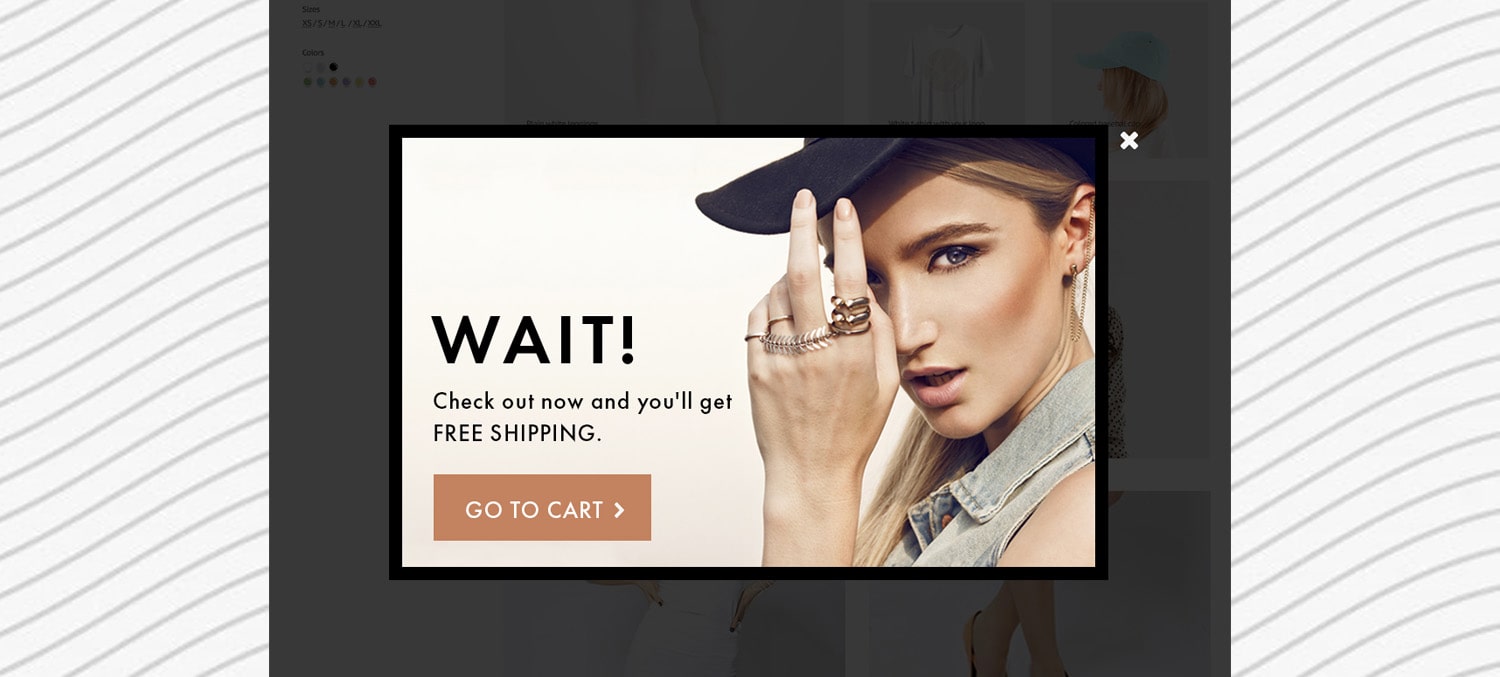
If your website is in wordpress, you can read this article to know how you can build and use a popup in your landing pages.
Encourage Reviews & Showcase Those on the Landing Pages
Nothing is purchased without first having a discussion with a friend, reading a review, or browsing an app. Because most purchases begin online these days, evaluations serve as a stand-in for a brick-and-mortar employee who could establish confidence.
My friend bought headphones from an eCommerce company a few days back. When asked about the product quality, he said, “Don’t you think I checked their rating first? 100+ 5-star ratings were there with images. All those reviews can’t be wrong”
Now you got the idea. But, the question is, how can you get the ratings by asking your customers, right?
Here are some methods to get the review:
Make it easy for them, especially for mobile devices. A lot of the time, I tried to provide ratings in various eCommerce. It would have been a positive rating, but I didn’t at last. Because there were too many stages I needed to go through to provide a rating on product pages. So, reduce the frictions.
Send a request for a post-purchase product review. You can do it through email marketing tools.
Show some love to your customers. You can provide some coupon code or discount when any of your clients provide you a testimonial. Showing those testimonials on your checkout pages will help you to bring new customers from your online stores.
Optimize High-Performing Blog Posts
It is best to optimize your blog material when you write it. But you can always go back and improve earlier pieces.
Search Engine Optimization of blog posts is important since it helps you attract more people to your website on a regular basis. There are numerous strategies to drive traffic and converting customers to your online business.
Send traffic to landing pages using a funnel. Sometimes we set different landing pages to convert customers. This is where you should segment your content and readers based on the funnel stage and targeted traffic.
Place display ads in the Sidebar and end of the blog for a split test. You can easily find which ad and placement are contributing more to your online marketing. Based on that test, you can proceed further.
Don’t underestimate the power of contextual links inside blog content for conversion. Users are more likely to click on contextual links inside blog material if it is of interest to them.
Use the progress bar in the blog pages. With that, readers estimate subconsciously how much time they need to read a particular piece of content. You can set a test, with it and without it. Check the impact and proceed accordingly.
Increase Your Website Page Load Speed
The faster a website loads for a user, the more likely you are to turn that person into a customer.
I’m quite confident I don’t need to explain further to you, how important website load speed is to increase conversion rates. It is critical.
Unfortunately, many blogs today are filled up with large-sized pictures, external javascript files, and extraneous code. This is the direct blockage in your road to higher conversions.
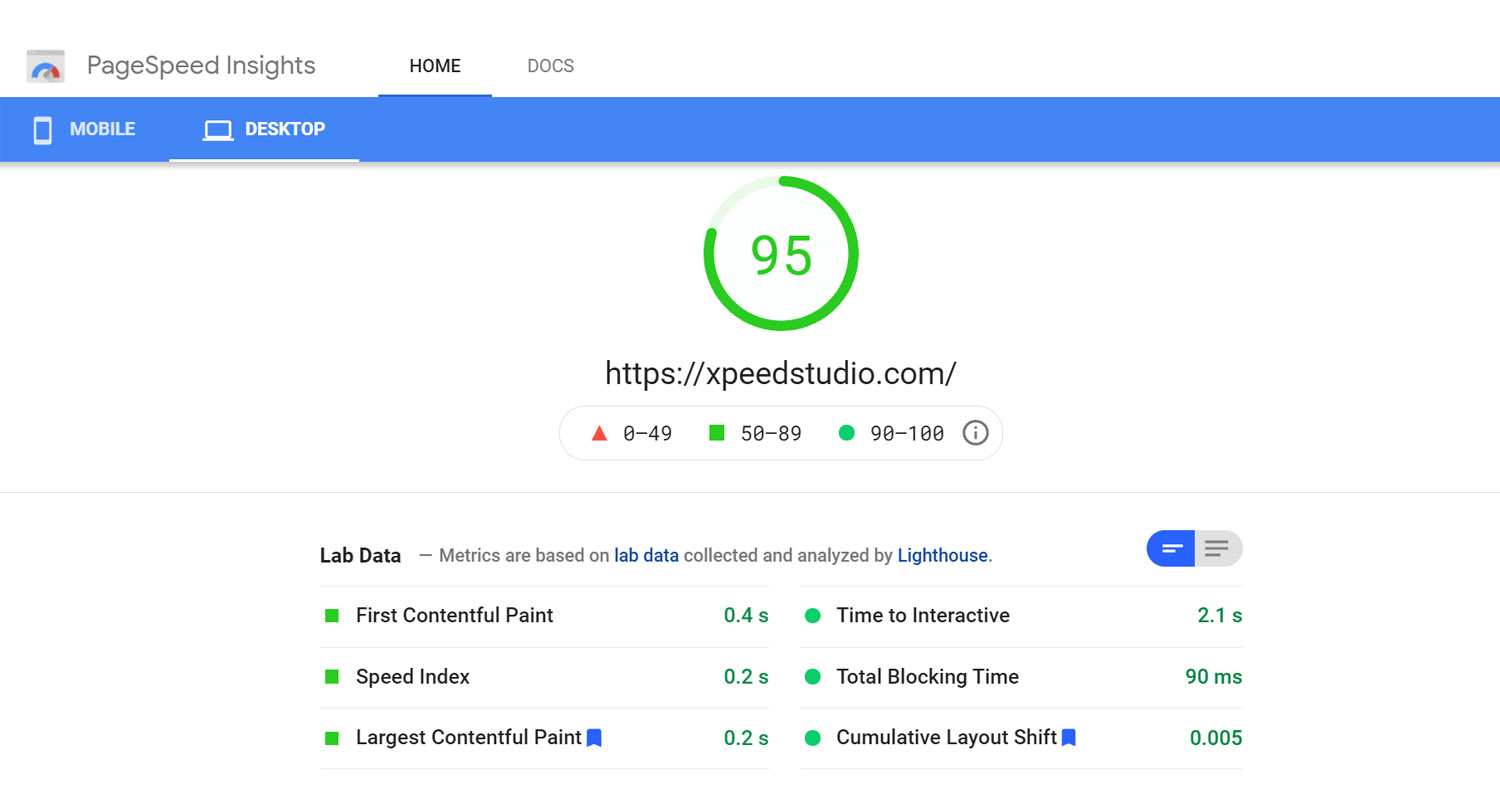
With tools like Google Pagespeed Insight or Gtmetrix, you can check the speed of your website – both for desktop and mobile devices.
Speed of the website is very much correlated to overall conversion rate. From the image below, you can clearly see the effect of speed change in website.
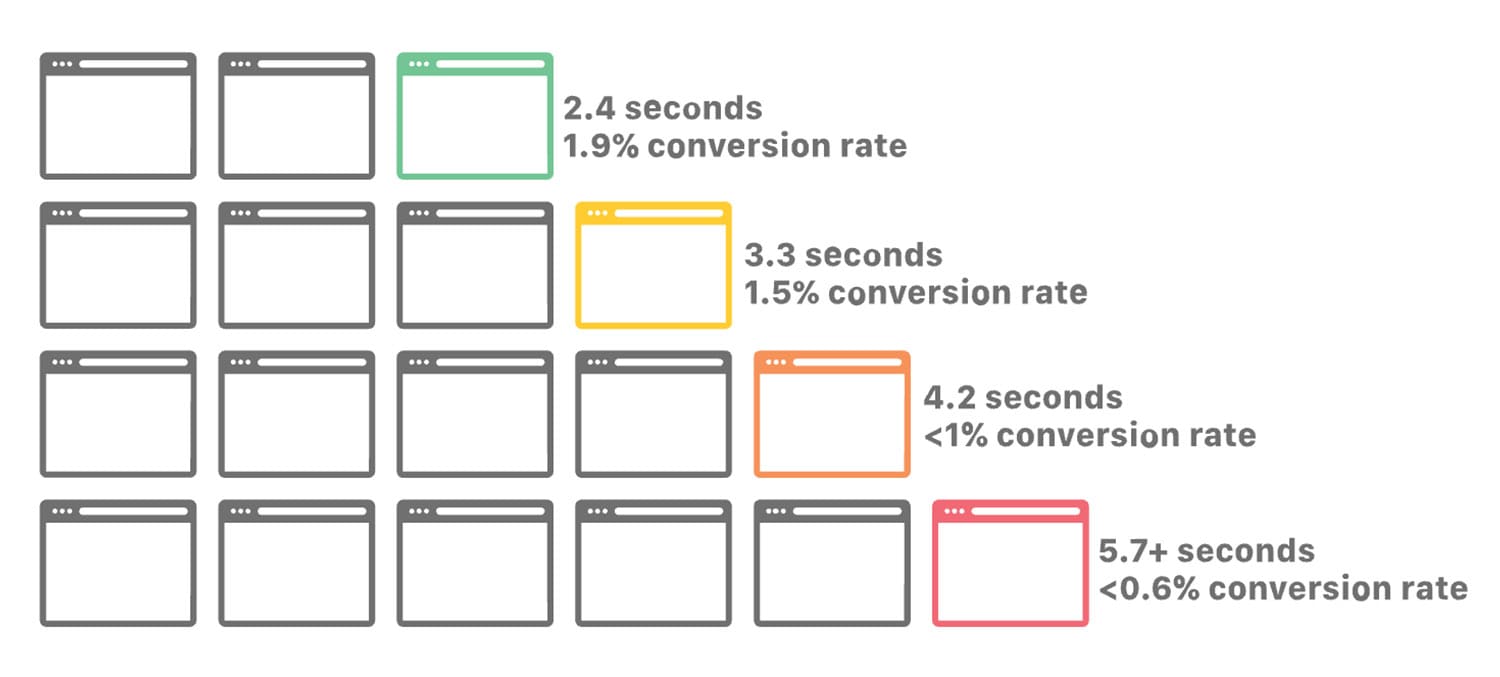
Walmart discovered that every 1 second reduction in page load time improved conversions by 2%.
COOK improved conversions by 7% by shortening page load time by 0.85 seconds.
Mobify discovered that every 100ms improvement in the load time of their site resulted in a 1.11% increase in conversion.
Survey website visitors
It’s also a good idea to question, ‘How likely are you to recommend this website to a colleague or friend?’ This will help you calculate your NPS (Net Promoter Score).
In order to obtain useful information from online surveys without overburdening your potential customers, a balance must be established here as well.
Surveys that are kept brief have a higher chance of being completed. While it may be tempting to ask as many questions as possible in order to elicit as much information as possible, keeping it brief will help you to evoke a wider range of responses.
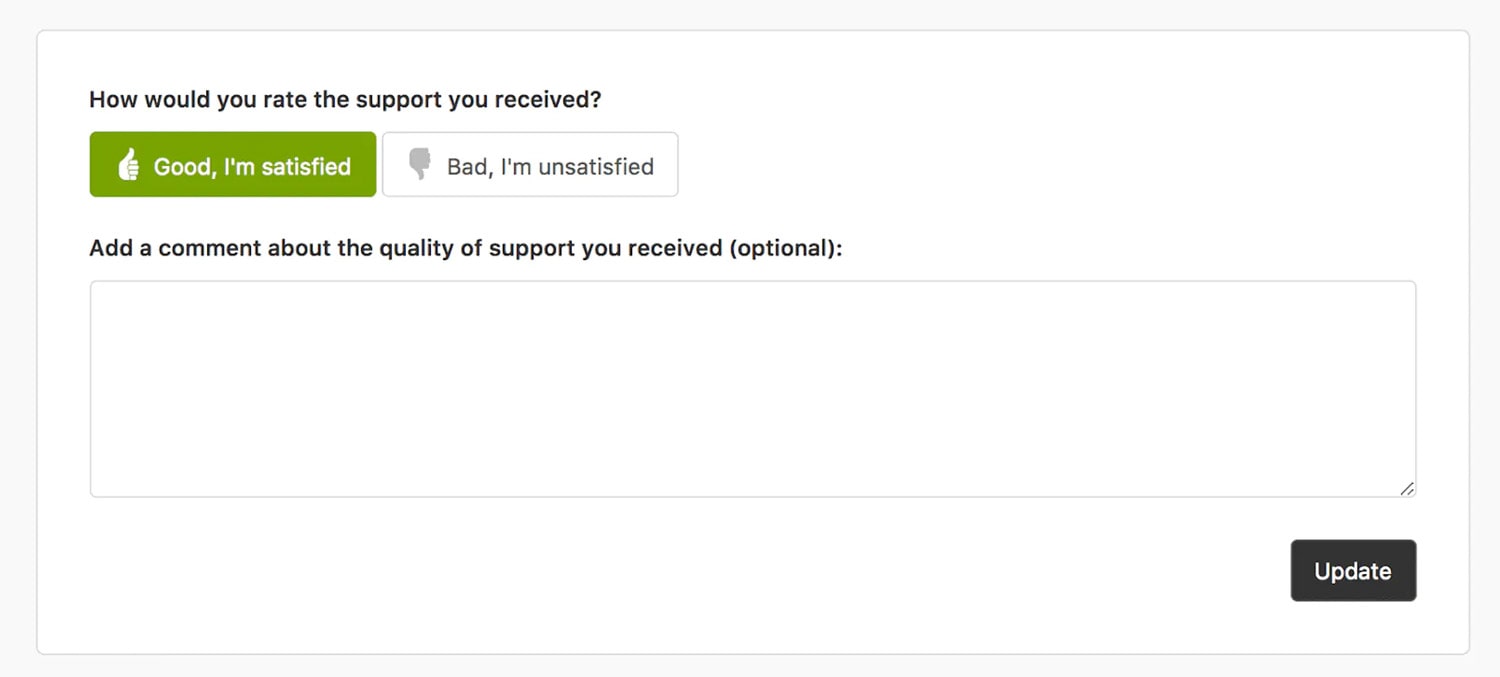
But make sure the timing and placement of your survey questionnaire are good. You can place it on your thank-you page. You can also take feedback from your customers who abandoned your cart. You can show it to the FAQ page to understand if his/her queries are met perfectly. Also, can show the survey form after spending some time on the website or blog pages.
Never ever show the form to your target traffic just after they land on your website.
Implement live chat
One of the most significant advantages to offer live chat on your website is the generation and capture of leads.
Not only do you give excellent customer service, quickly responding to customer inquiries, but you also catch future visitors by striking up a discussion with them.
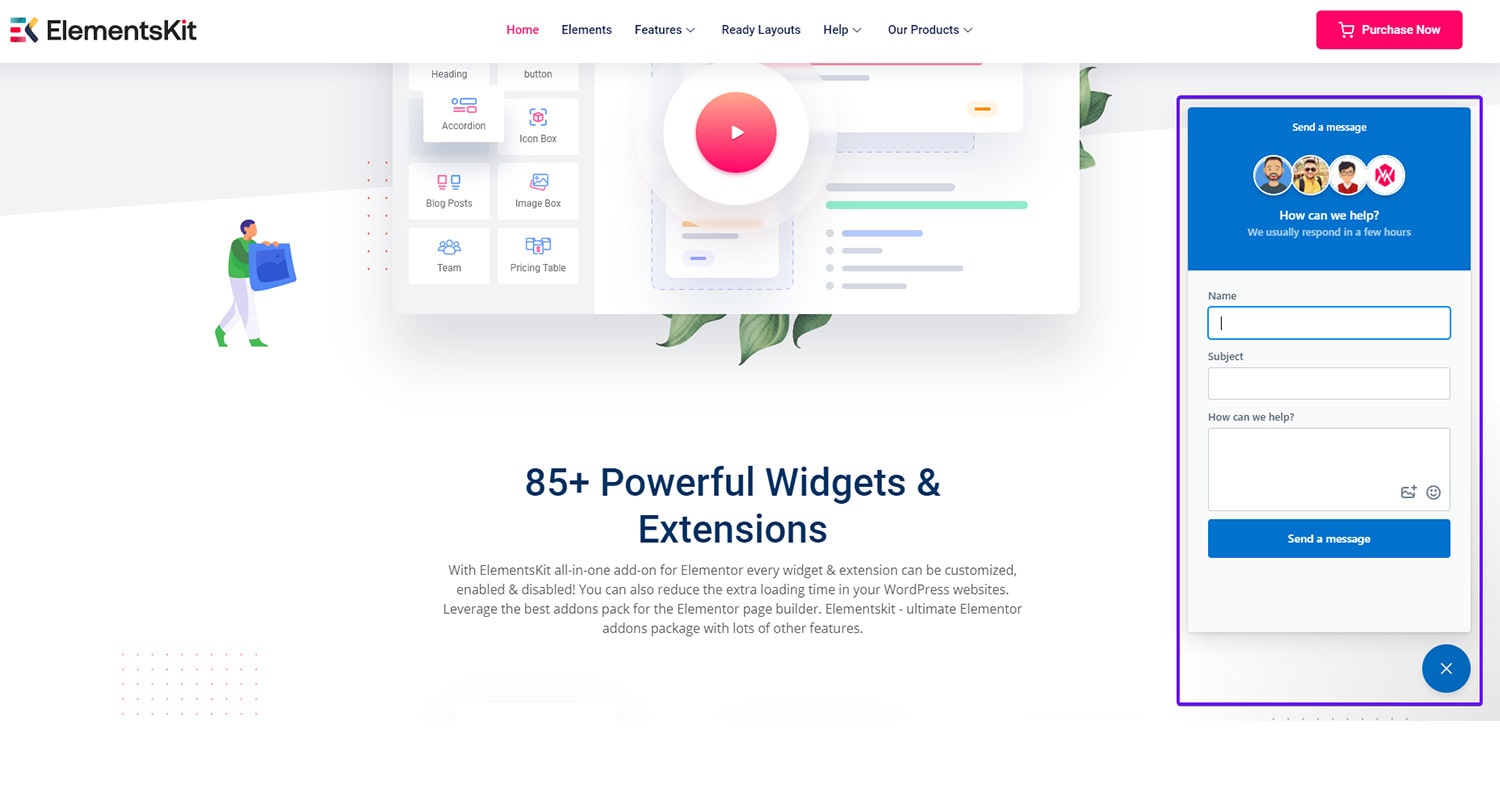
What you can do with live chat on your website are –
- Automate your chat greetings to your visitors.
- Integrate with your CRM system to collect visitor information.
- Integrate with email marketing services and send them customized emails.
- Using post–conversation surveys, collect feedback after each chat.
Above all, keep in mind that a conversation must be available in order to function live chat system. Make it available 24/7, or use chatbots when your Live Chat support staff are unavailable. Respond promptly, within 15 seconds or less.
Tap social followers to convert into a customer
Entrepreneurs employ a number of marketing methods, including SMS, email, and social media. All of those are useful.
Rather than using the same content over and again, invest in innovative formats such as video series, interesting infographics, quotes, GIFs, stories, smart memes, and so on.
Interact as much as possible with your audience and be empathetic in order to discover their preferences and pain points.
Make your communications as personalized as possible, and reach out to your followers with messages customized to their specific needs, concerns, and lifestyle, such as promotional discounts or freebies.
Additionally, encourage them to share your content with their network in order to enhance visibility.
Begin following your followers to stay trendy on your community’s choices.
Social media is one of the main sources to increase revenue and tap target audience. You just need to nurture them and put some marketing efforts into your social media.
Polish the Navigation of Your Website
Navigation is a crucial system to drive your customers to their desired products pages and between the landing pages. It becomes more crucial if your website is an eCommerce website.
I’ll be focusing entirely on e-commerce website navigation—how to improve, optimize, and perfect it. However, those excellent suggestions are relevant to any type of website.
- Include Product/service Categories in Your Main Navigation
- Include Internal Searchbox in website
- Offer AJAX Search Suggestions system
- Use Cookie Retargeting to show different content on the same page when revisiting
Using the techniques I’ve highlighted above you can improve the user experience of online shopping. As a result, increase customer satisfaction, raise the average time spent on your site, and of course, your conversion rate.
Have clear product options/variations
Certain eCommerce items, particularly those in categories such as clothes and shoes, have variants.
When an item has different qualities, such as a variety of sizes or color options, it is grouped together with all of its variants on a single detail page on eCommerce.
Before adding the goods to the cart, the client must select the version they want, such as size or color (or both).
You can use ShopEngine if your website is built on WordPress and Elementor.
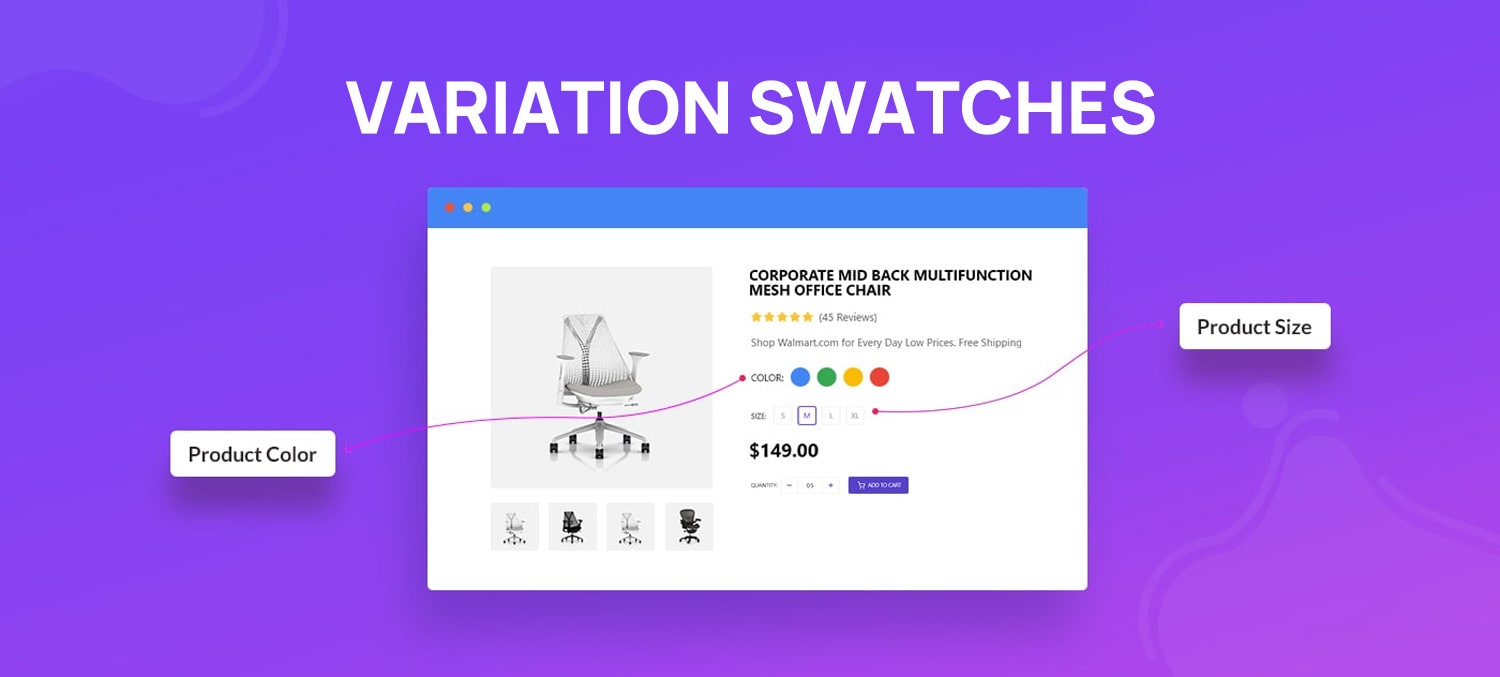
Sort Categories by Popularity
In the footer navigation, the category links should be shown in ascending order of popularity.
Put the most clicked links at the top and the least clicked category links at the bottom. If you don’t want to sort by popularity, try sorting alphabetically so consumers can skim fast while browsing.
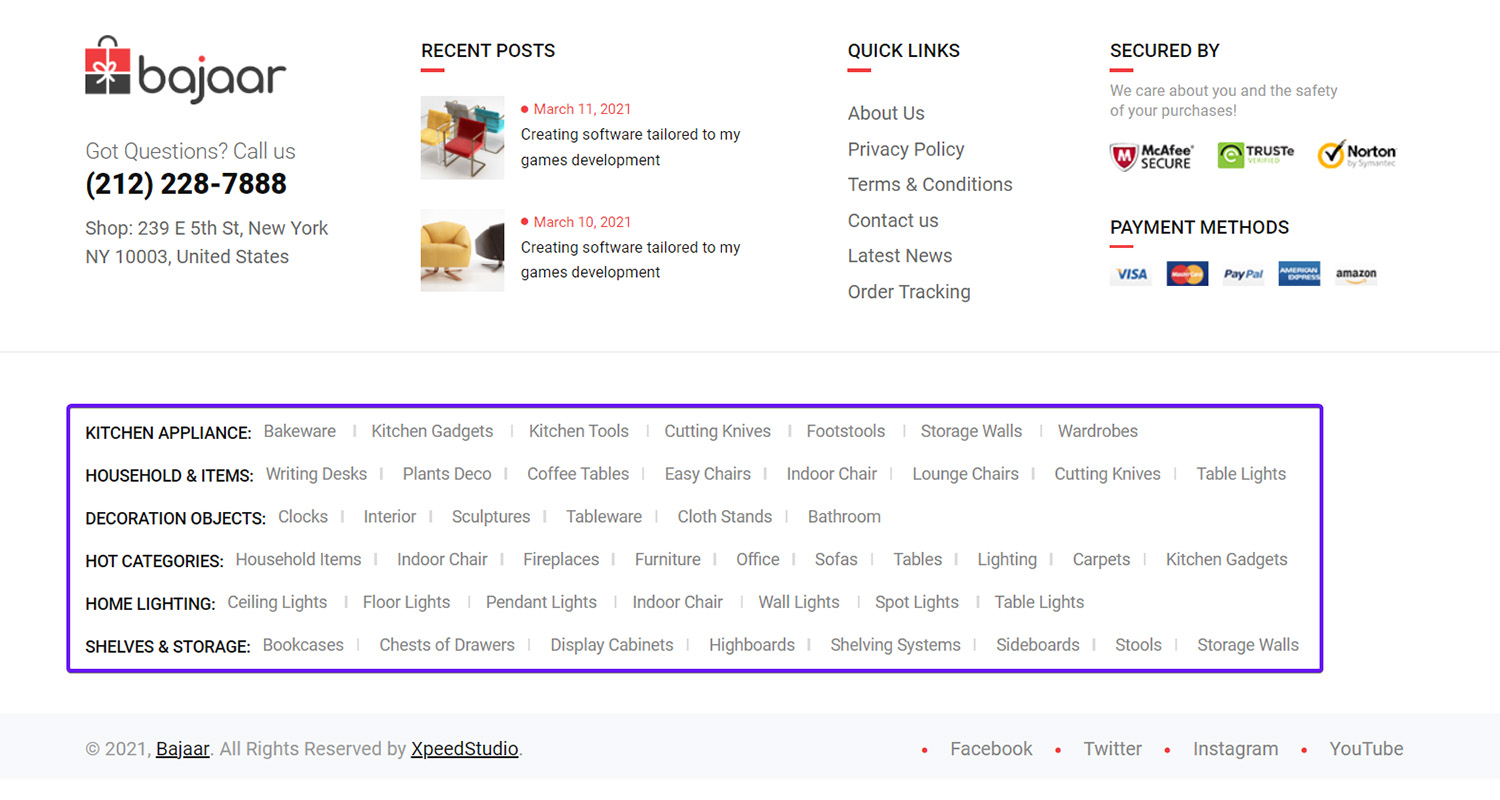
Provide SEO-friendly product/service descriptions
If you want the shopper to click the “Add to Cart” or “Buy Now” button, you must have a fantastic product description for each of your products or services.
It may appear that writing product descriptions are difficult, but it is actually simply a matter of emphasizing the features and functions of your product or service and describing how they benefit your consumer.
Keep it brief and easy to read. Also, don’t forget to link to things like your shipping and returns policy, FAQ sites, product reviews, customer testimonials, size carts, or anything else that is required or beneficial in communicating facts about your offerings.
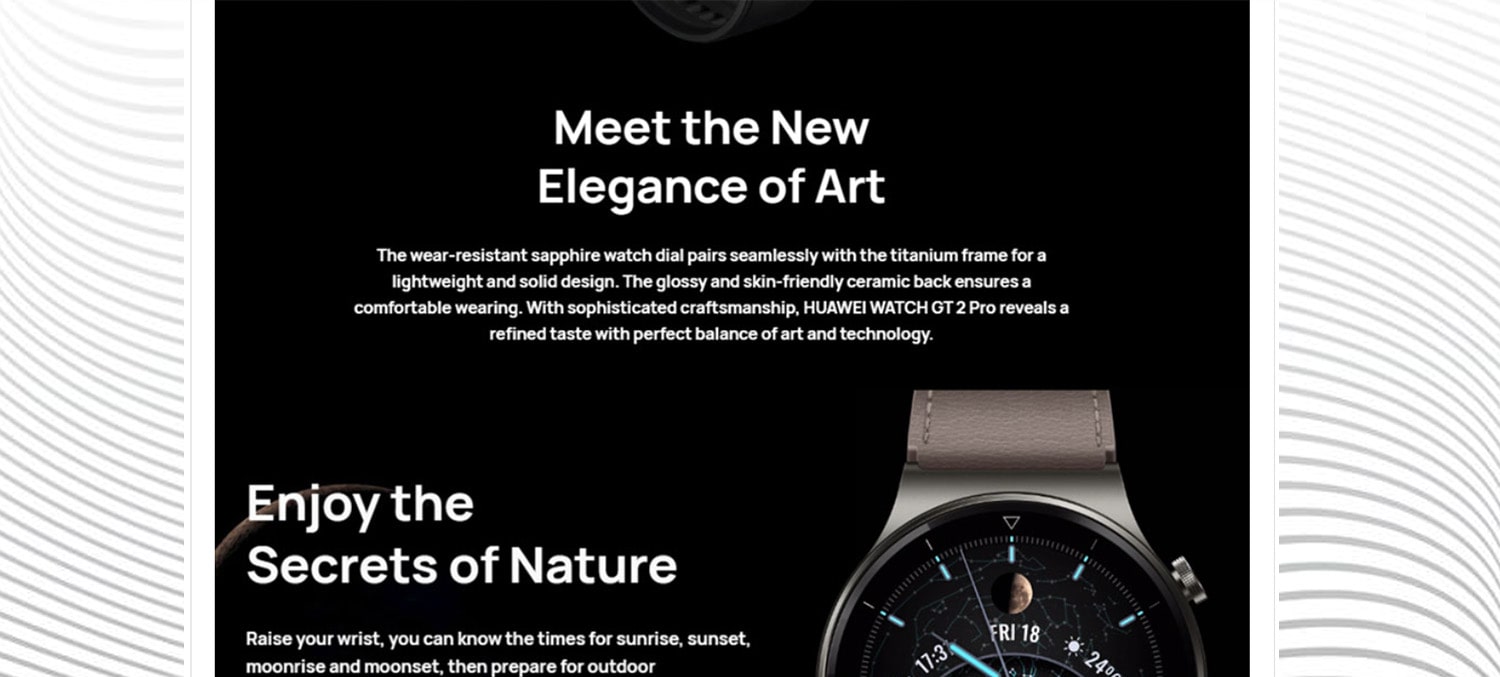
Test and fine-tune the checkout process
There is nothing more essential in any online store than the checkout process conversion rate. This is the page that generates genuine revenue for you.
Even a little improvement in the conversion rate of 1% can bring thousands of dollars in real money to your firm.
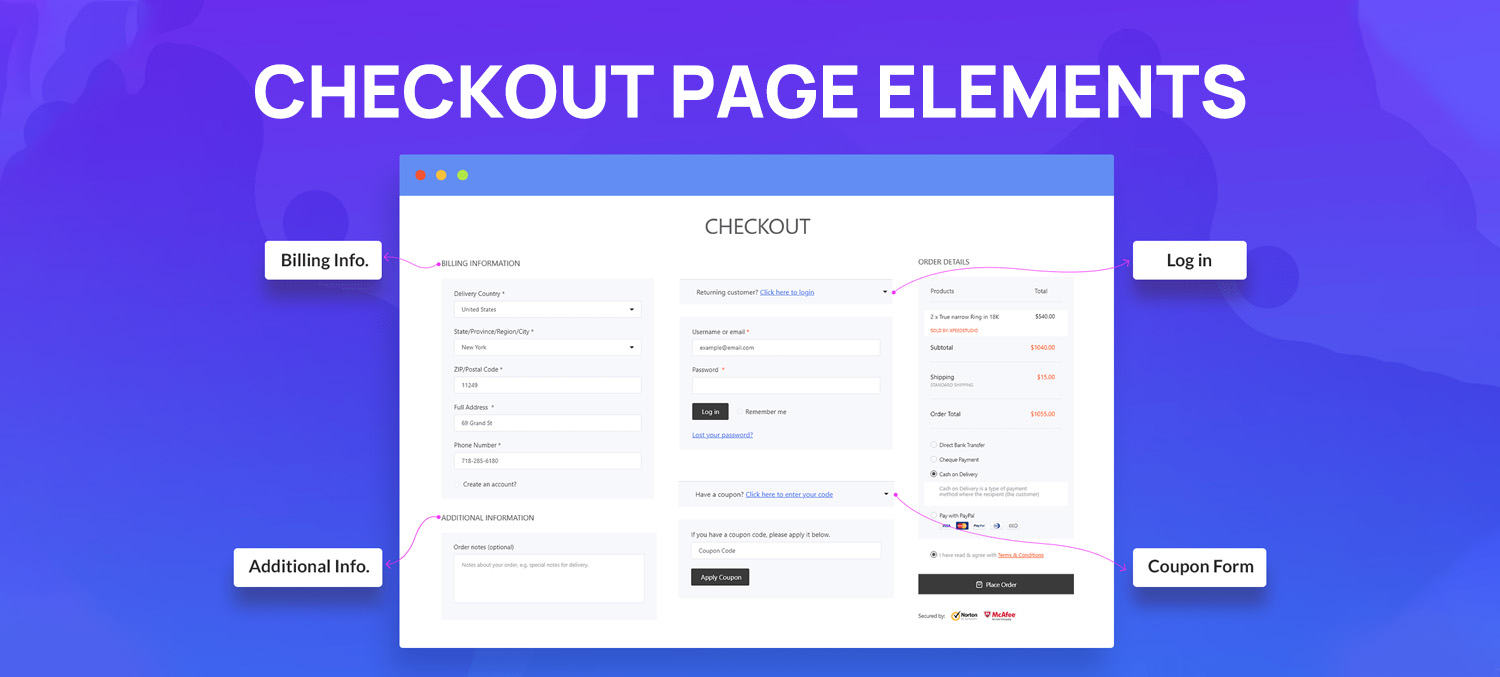
A study revealed that the top reasons for cart abandonment include complicated checkout processes, security, and account creation problems.
To overcome those you can rely on the following things:
- Try out a single-page checkout process.
- Allow users to check out without creating an account.
- Offer free shipping, no-hassle returns, money back guarantee and secure payment gateways.
- The shorter the form, the greater the conversion rate.
- Include a progress bar in your checkout procedure. This will let your customers know where they are in the purchase process and how long it will take to complete their transaction.
There are numerous approaches that may be taken to improve customers’ checkout experience. Some just need more work than others.
Use high-resolution product/team images
When you go shopping, think about what you want to do. Maybe not just see, you also want to touch, feel and experience the product.
When you buy something online, you can’t touch or try it on. The best thing you can do is show detailed product images or videos so that the consumer knows exactly what they are buying.
Every page on your ecommerce website should have a specific purpose. And every piece on that website should help you achieve that aim. The images on a product page will almost always be different from those on a category page.
Here is some of the conversion rate optimization tips using hi-res images and videos:
- Provide all required viewing angles.
- Allow the customer to zoom in on any aspect of the product.
- Keep an eye on picture file size and website performance as a result.
- Keep in mind the fundamentals of product image SEO.
- Consider 360° viewing possibilities or a high-quality product video.
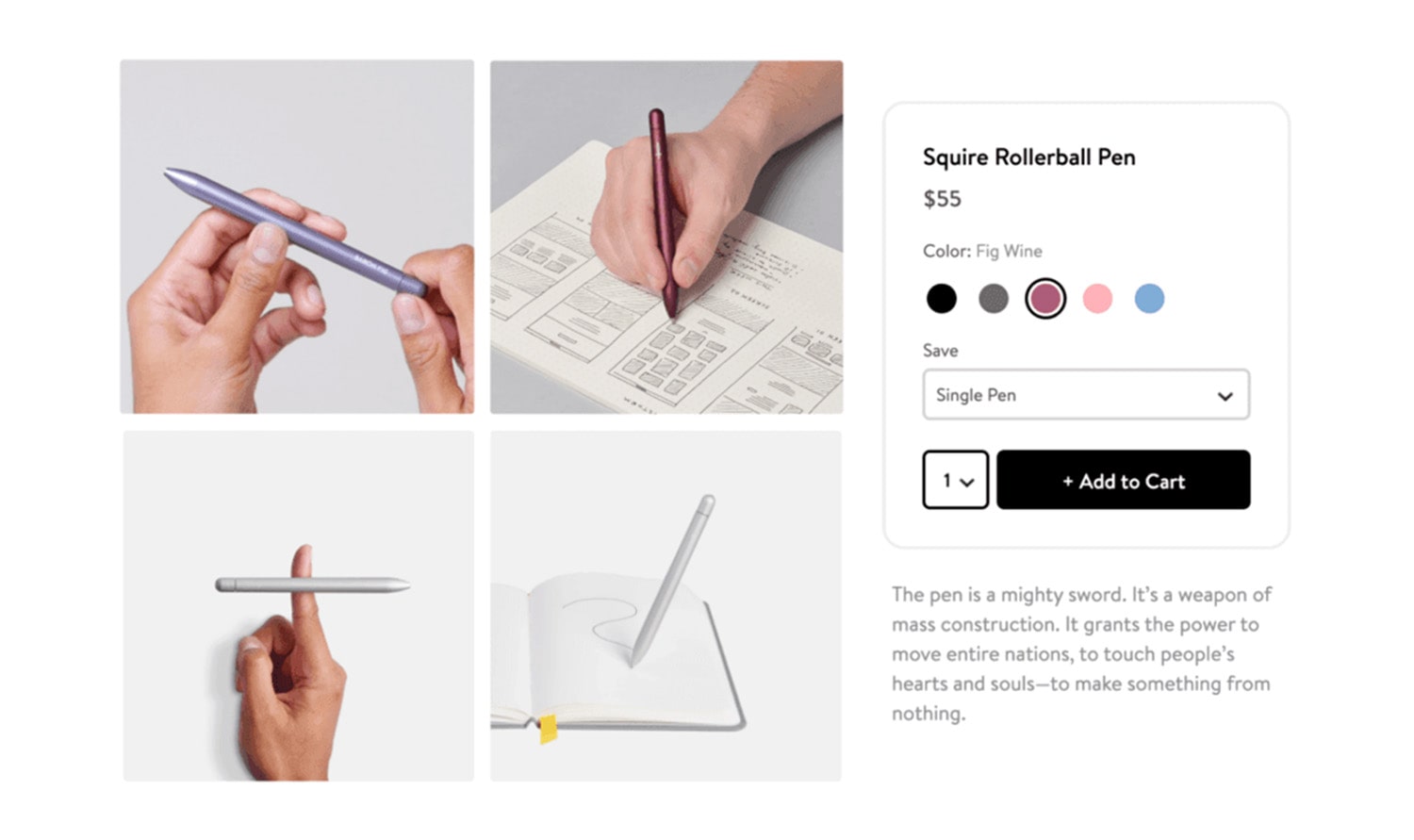
Keep in mind that you are aiding the buyer in making a purchase decision. Each view and click indicates a new step along the path.
Make your prices and CTAs clearly visible
Although you don’t want to make your product or service’s pricing the main focus of the page, you also don’t want to hide it. Pricing strategy differs according to the type of business.
But if you run a store that advertises its pricing as a selling point, such as online retailer hiqmah, you may want to call out your product prices to help drive sales.
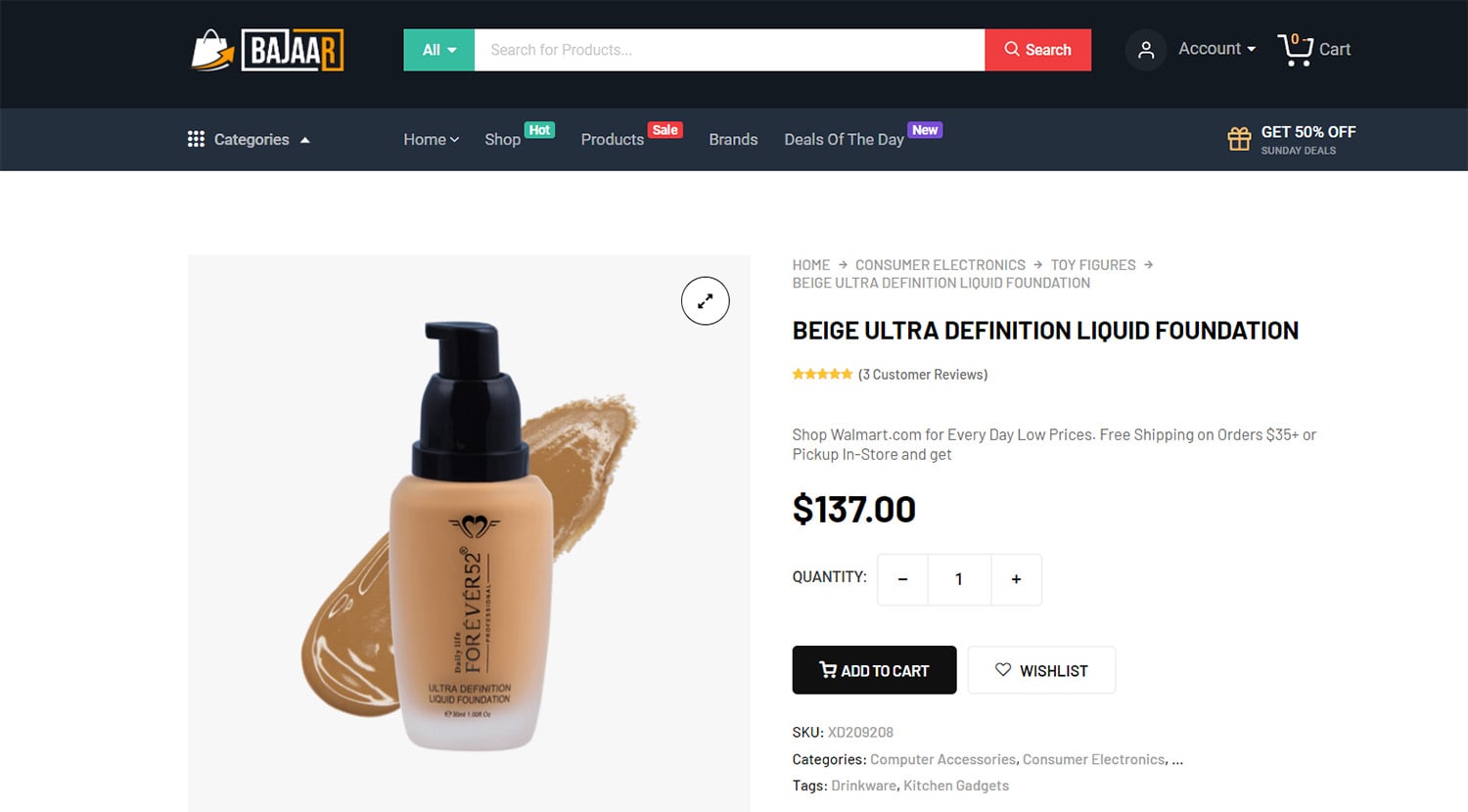
For example, in bajaar theme, you can see that pricing has been shown as the focus point of the product page. “Add to Cart” button has also been placed in a good way.
Implement Sales notifications in Website
Sales Notifications are automated notifications that prompt a customer to act. Some sales alerts include information about a special deal or promotion. The most powerful alerts, on the other hand, present real-time data such as recent customer purchase information.
Notifications provoke a stronger emotional response than typical sales material because they make this context evident.
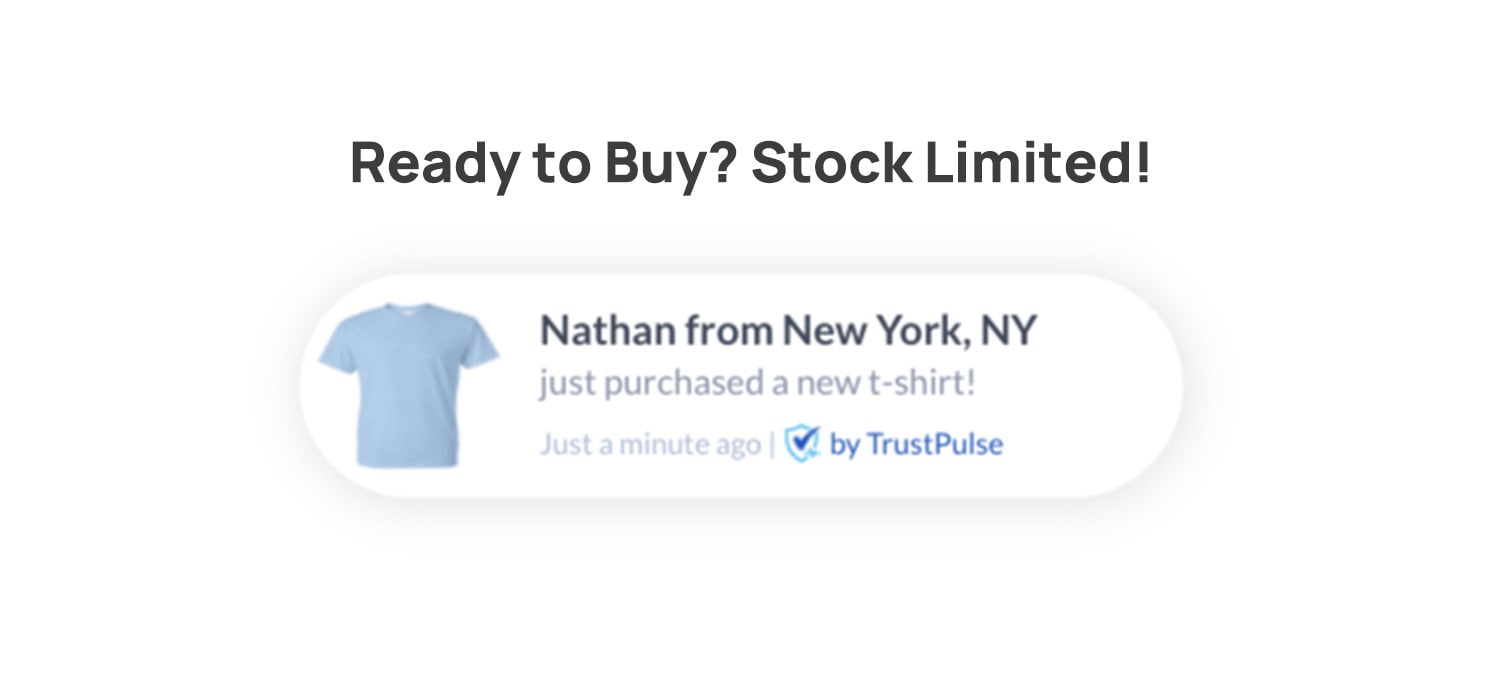
Implement auto-suggestions using AJAX
Assist consumers in easily finding products on websites. Add the AJAX Instant Search system to your store.
In that search system, when web visitors input their inquiries, the Ajax Instant Search bar displays relevant results. It saves them time since they don’t have to go to a search-results page to discover items.
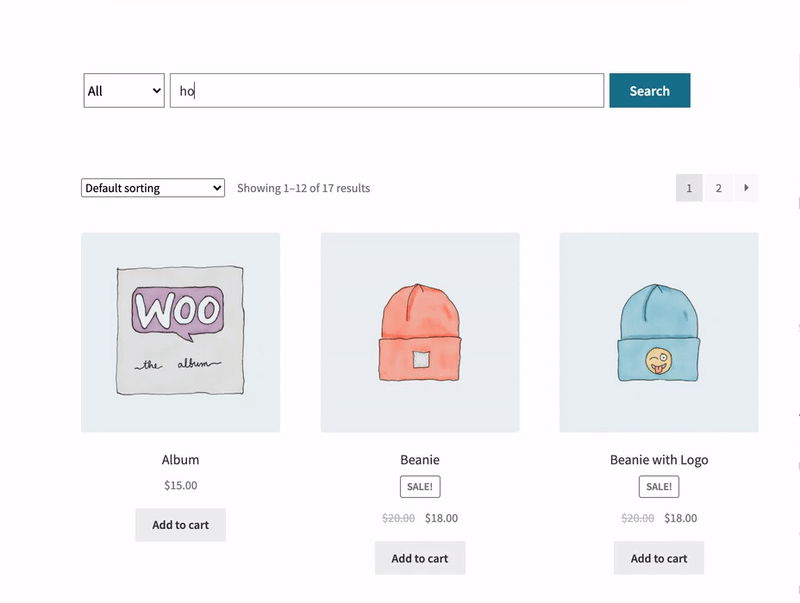
Use cart-abandonment automation system
Cart abandonment occurs when a customer visits your website, adds products to their baskets, but fails to finish the purchase for one reason or another, leaving the transaction incomplete.
Conversion rate optimization (CRO) refers to a collection of strategies that assist you in converting visitors into paying customers and avoiding or reversing cart abandonment.
👉👉 Also check lead form conversion rate optimization tips to reduce form abandonment rate.
Tools for Successful Conversion Rate Optimization
There are many tools you can use for the process of CRO. Check out the tools listed below. Some of those tools are free and some are paid.
Awwwards
Having a collection of the top website design inspirations can be a huge help to you. You can get into landing page layout optimizing faster and more efficiently with a surplus of design ideas.
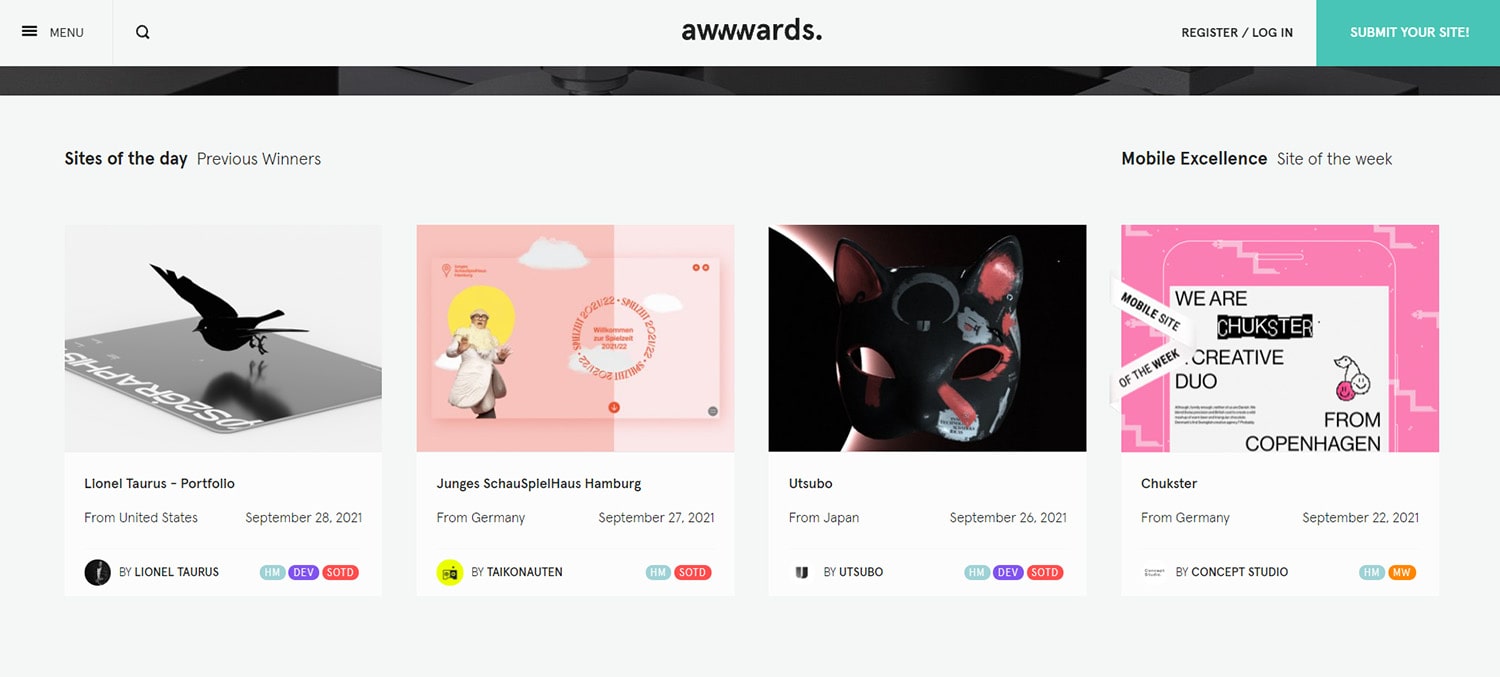
Whether you’re a seasoned web designer or just starting out, the breadth of a web design job can quickly reduce the number of resources available, making it difficult to locate the proper web designs for inspiration for your task.
However, having a few dependable beginning points can help you meet your needs while also inspiring you to explore new design solutions. Stay updated with the design trends, and challenge your creativity.
Google Optimize
Google Optimize is a platform for experimentation and testing that combines with Google Analytics.
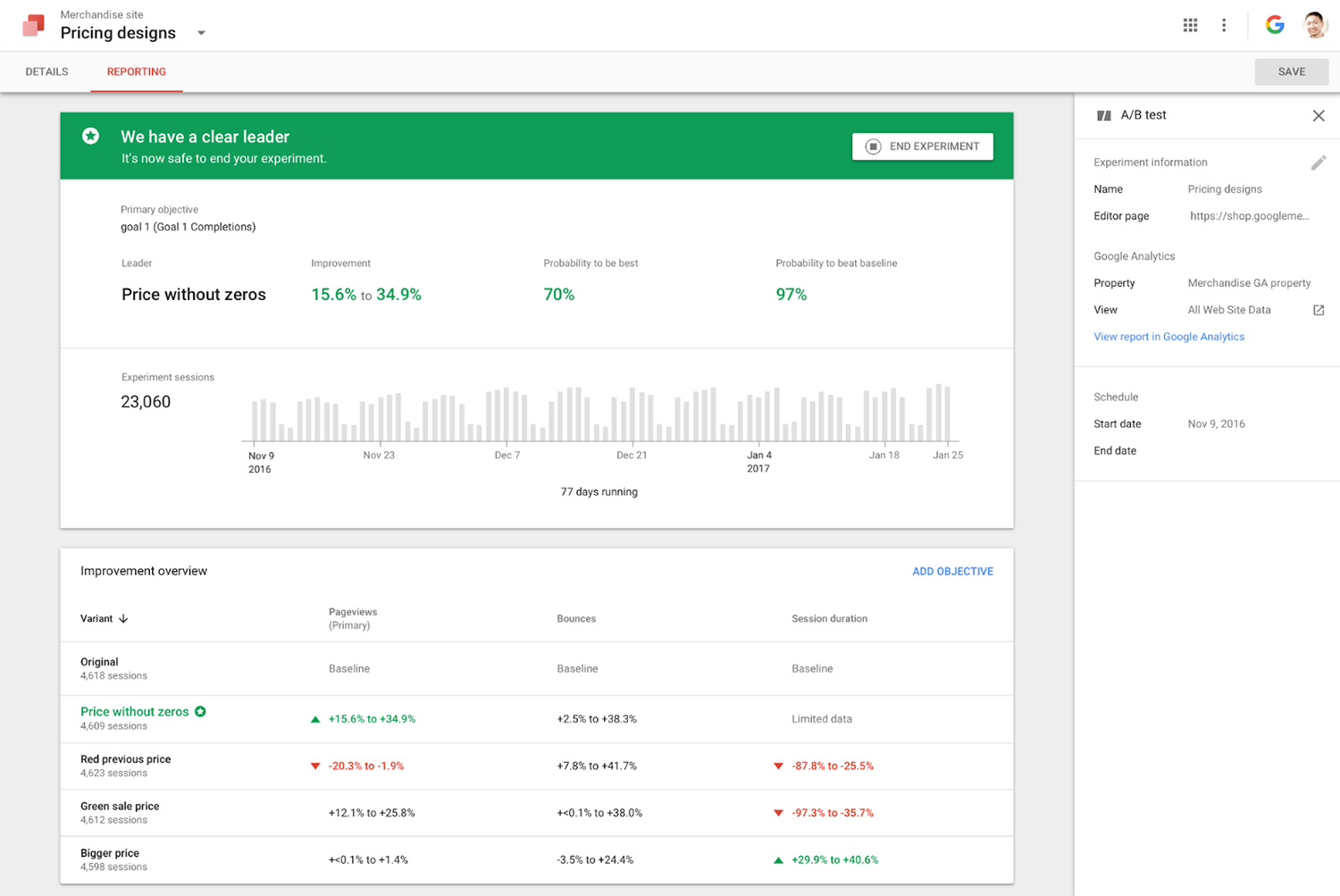
Google Optimize is used for A/B testing, split testing, and multivariate testing (MVT) on different versions of web pages in order to determine how well each page performs.
Heap
Heap is a real-time web analytics platform that gathers information about client-site interactions such as page views, clicks, contact form or any other form submissions, and change events. What makes Heap so effective is that it automatically collects user interactions in both your app and your website.
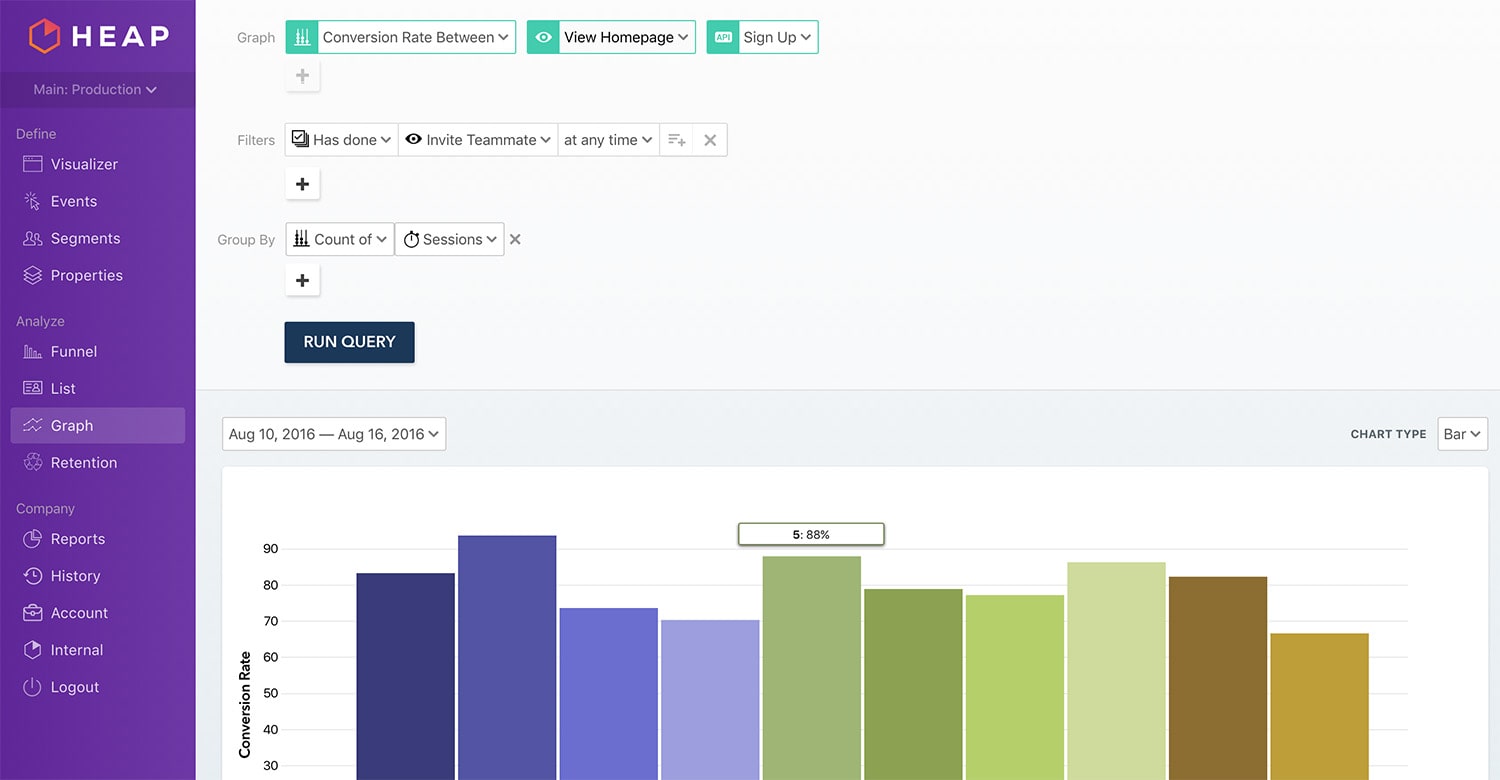
With heap, you can track typical metrics such as page views, sessions, and form analytics such as form clicks, form submissions, and field modifications. You can learn how your website’s new visitors utilize and interact with it.
Hotjar
Hotjar is a piece of behavior analytics software that allows you to track and measure user behavior and input.
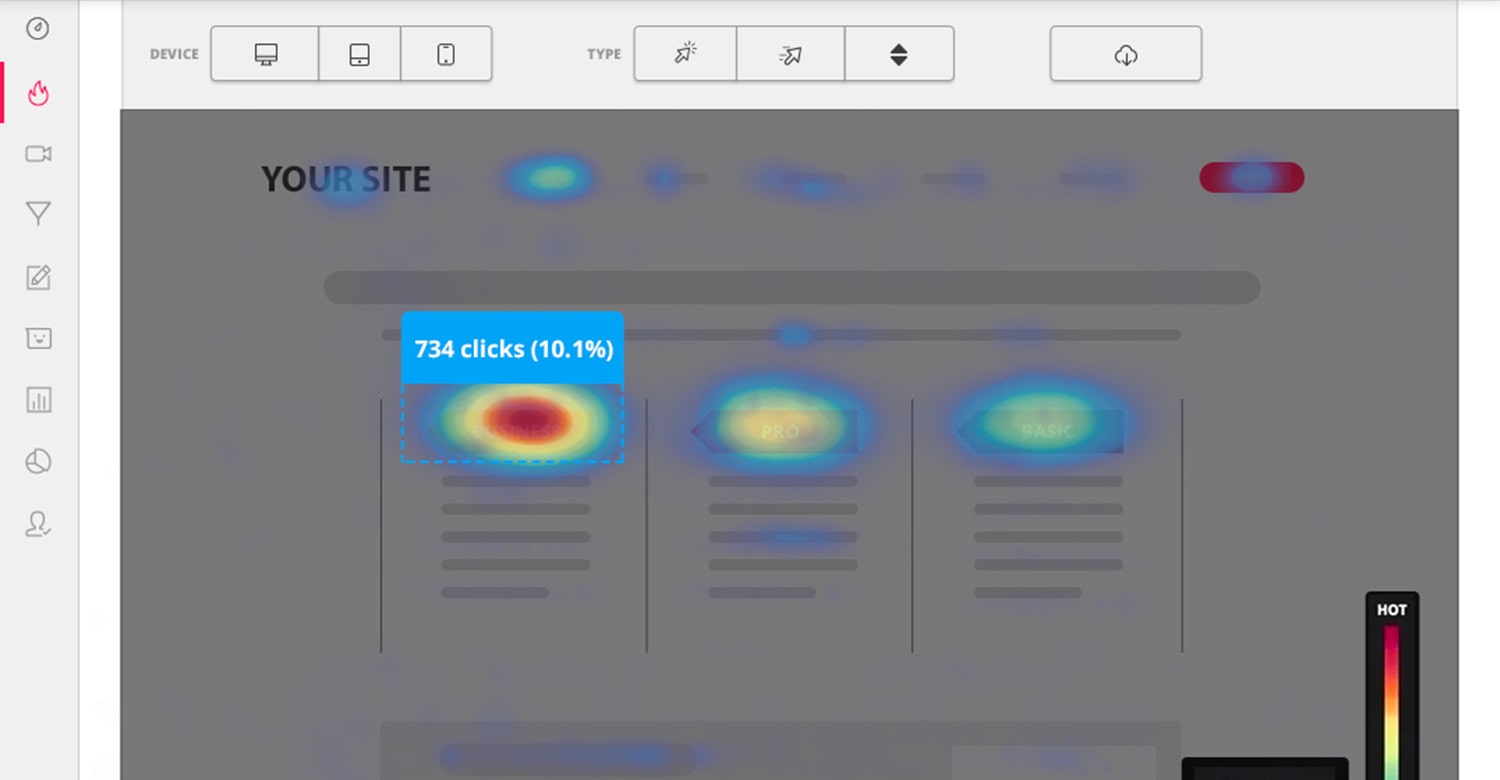
It is beneficial for behavior analytics tools such as heatmaps and session recordings to assist you in identifying pain areas a consumer encounters on your sites, such as website bugs, a confusing design, or broken links and elements.
On-site surveys and Incoming Feedback provide the voice of the customer (VoC) feedback, allowing you to learn what real customers like and dislike about your website.
Crazy Egg
One of the most well-known user behavior tools accessible, including all of the standard mapping and recording functions. There are several ways to visualize user behavior, such as “click percent reports” and “confetti snapshots,” but the core technology is the same. This is an older tool, but it’s a good one.
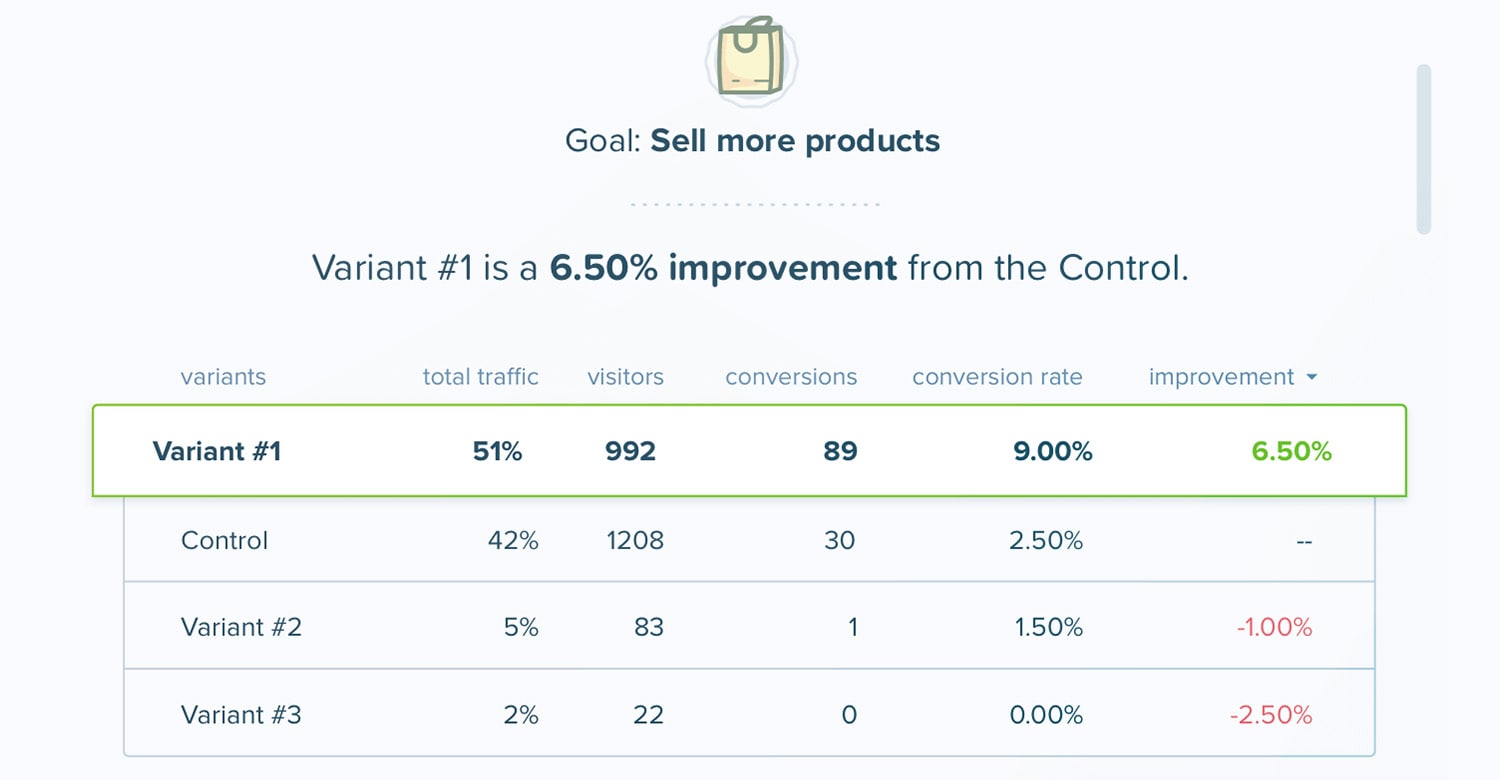
Google Analytics
Google Analytics is one of the top web analytics tools for tracking website traffic and user activity such as session duration, pages per session, bounce rate, and more across many site pages in real-time.
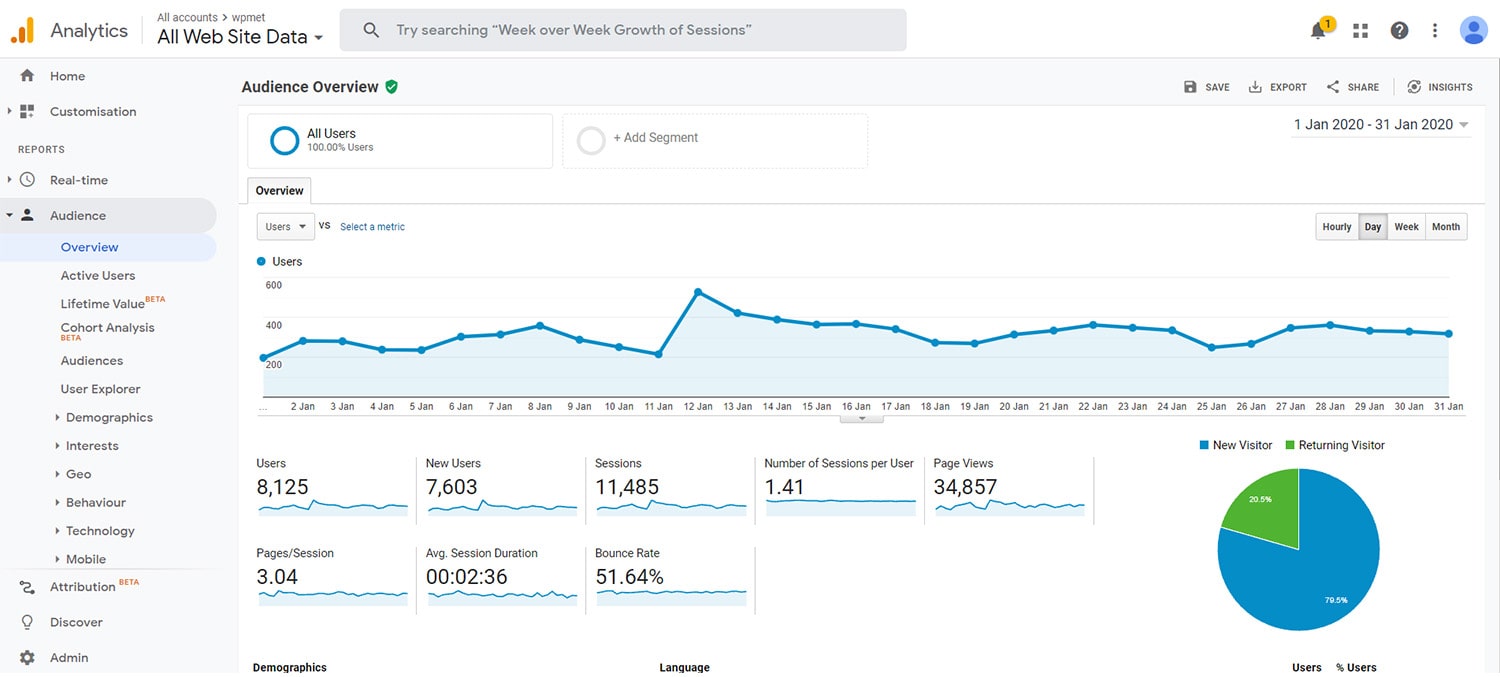
Additionally, it provides statistics such as traffic source(s), visitor location and demographics, page performance, and conversions. To gain additional in-depth information, you can upgrade to Google Analytics 360.
Mailchimp
MailChimp is one of the most well-known email marketing platforms on the market. It has a wide range of features and integrations, making it an excellent choice for small enterprises.
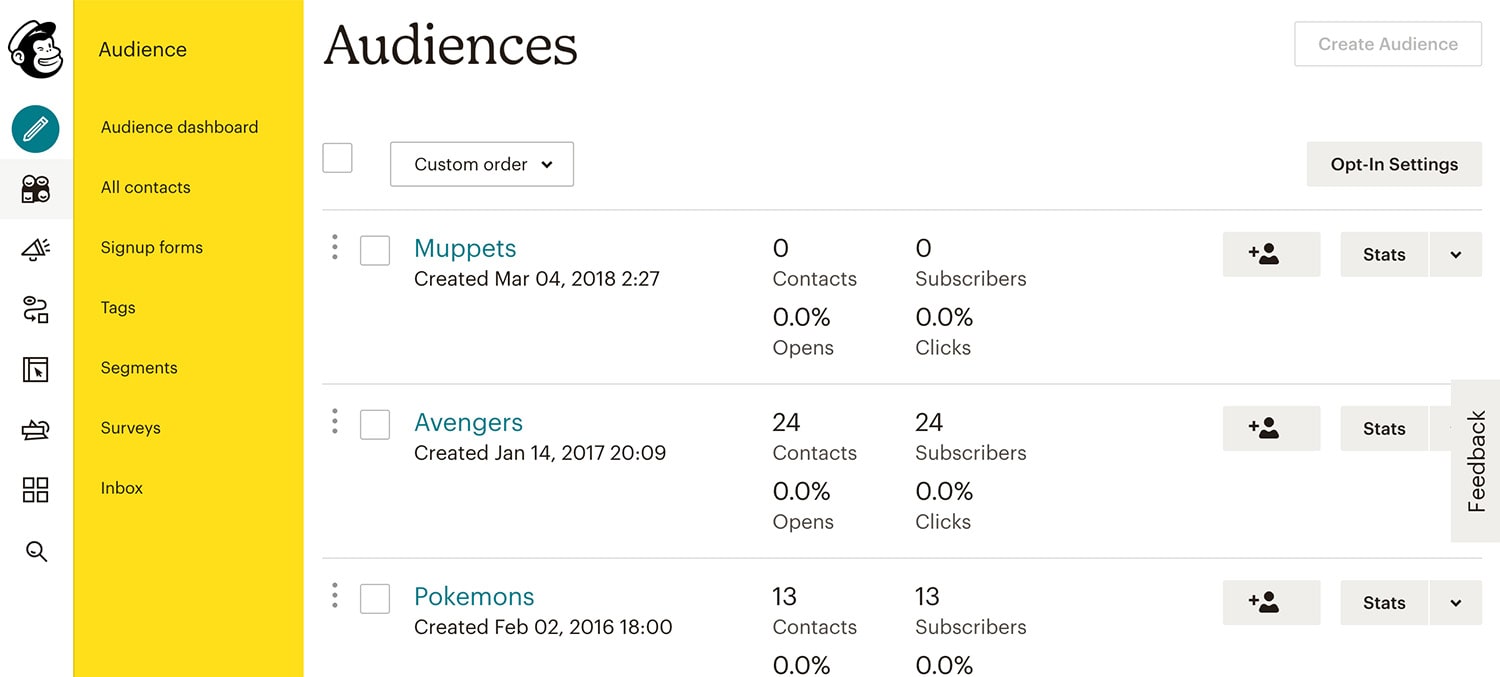
To connect with a website in CRO, you may need to use an email service at times. MailChimp may be of great assistance with everything from abandoned cart automation to interaction-based popup settings.
Google PageSpeed Insight
A no-strings-attached page-speed analyzer that is simple, fast, and effective. This is the perfect grab-and-go CRO tool. Even though it is basic, adaptable, and free, it is used by the world’s largest web developers.
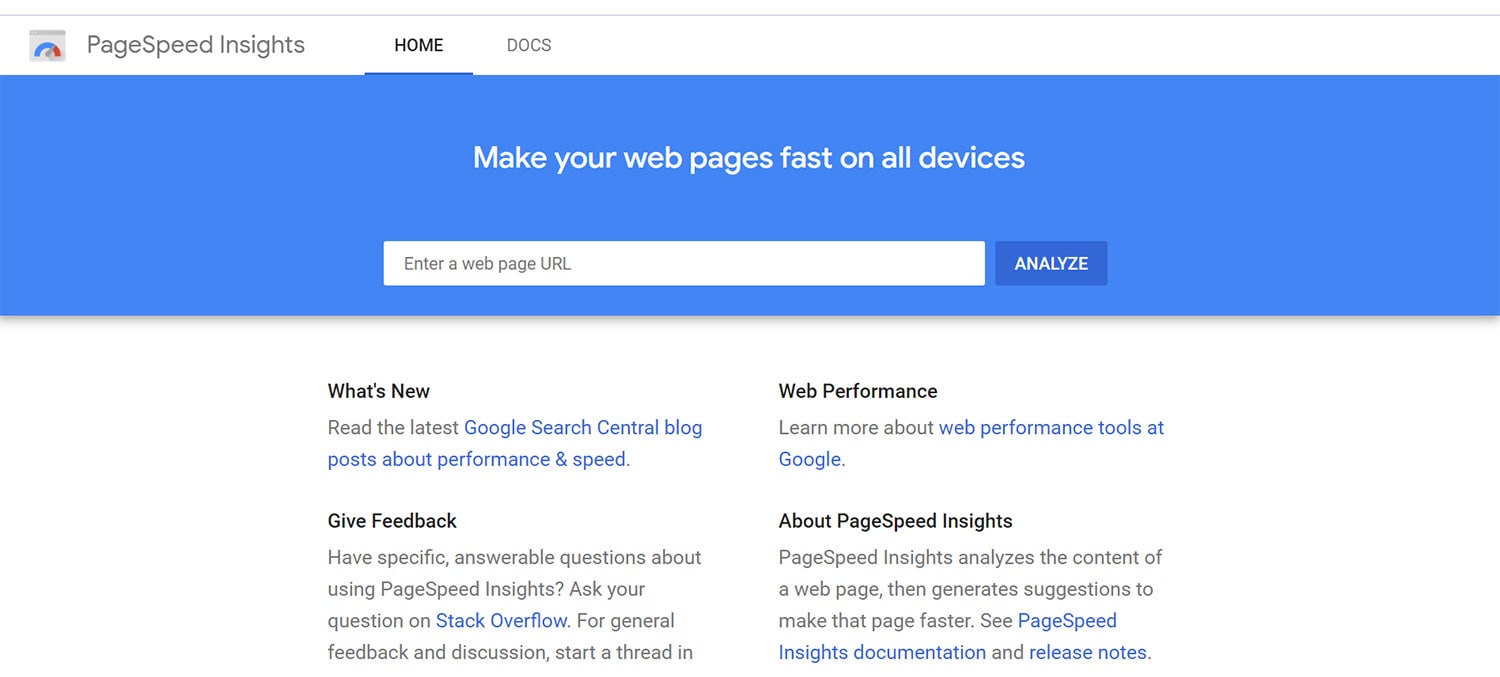
Google PageSpeed Insights provides statistics on the current load time of your site for both mobile device and desktop.
If your website is taking too long to load, Google will offer ways to speed it up. Some ideas are as follows: Minimizing HTTP requests, Optimizing your image file sizes, Reducing 301 redirects, Using browser caching, and many more.
OptinMonster
Another well-known lead generation tool that uses popups and overlays to boost conversions is Optinmonster. It gives websites powerful targeting features as well as next-generation opt-in form layouts.
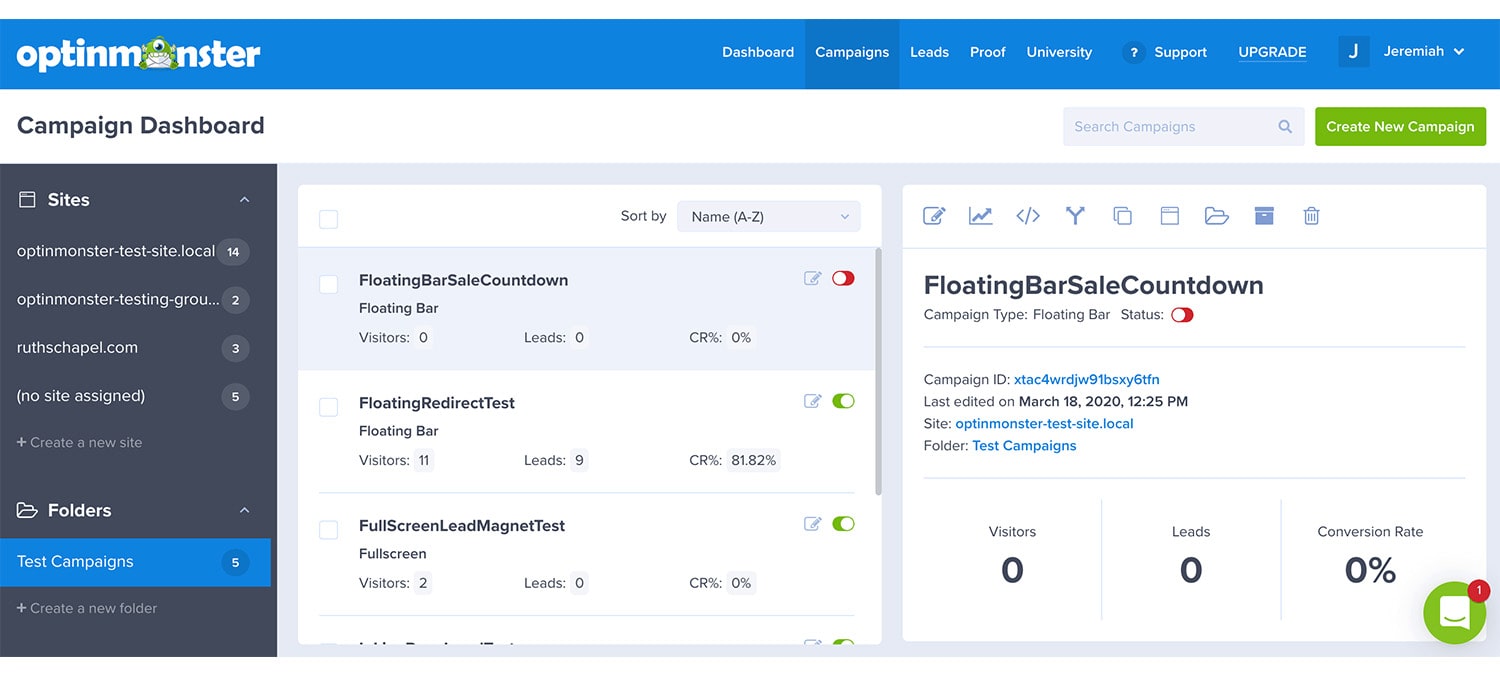
You can use popups to promote your campaigns, sales, collect fresh email leads, and convert leads into customers.
Conversion Rate Optimization Steps
I always guess the winner of an A/B test, and always I get it wrong. 😞
With years of marketing expertise and a lifetime of filling out online forms, I believe I know what content, layout, and design combinations would perform best. Thousands of people, on the other hand, repeatedly prove me wrong.
Marketers frequently do conversion rate optimization campaigns based on ideas and techniques readily available on the internet.
However, in most situations, these suggestions fail to deliver the expected result. The reason for this is that these growth hacks websites do not discuss the true conversion rate optimization procedure that we should use.
There is a precise 5-step process for successful conversion rate optimization. That procedure will be discussed in this section.
Step 1. Research and Analyze: Identifying the Areas of Improvement
Imagine yourself in the customer’s shoes. It’s easy to forget that you don’t know any more about your website or product than the buyer does. That is why it is critical to put yourself in the shoes of the buyer – try purchasing the product or service, take screenshots, or video the process. Try utilizing it as though you were a real consumer.
Take the feedback from customers. Customer feedback can be collected in any method you want, including via email, phone, or directly on the website. Remember not to provide them a choice of responses; their comments must be original and written in their own words. You can do it with the survey tools listed above.
Ask questions to your salesperson. Find out what issues and questions your visitors bring up and ask your salesperson about, and then acquire the answers to those queries. As with any other step. Make an effort to document it for later examination. The more thorough you are with data collection at this stage, the easier it will be to work on the subsequent CRO procedures.
Set goals in google analytics. Setting them up correctly can show you where you’re losing traffic and where you might have the most opportunity.
Step 2. Set Hypothesis
A hypothesis is a preliminary assumption used to test the logical and empirical consequences of an activity. This is a solid theory (based on your research and data) that says, “If I modify X, it will have Y impact.” After you’ve compiled a list of theories, prioritize them from most pressing to least pressing.
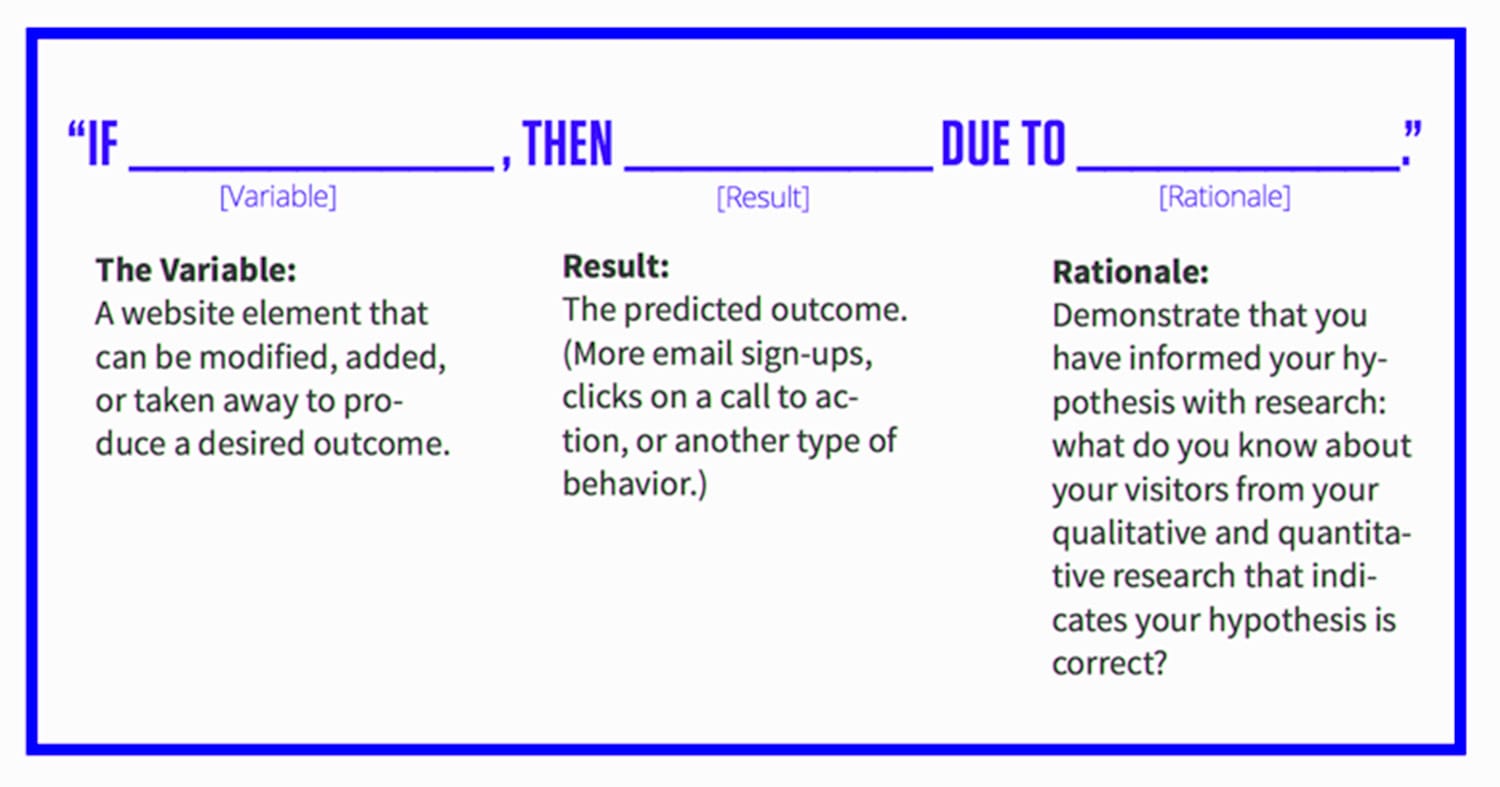
For example, a hypothesis can be: “IF social proof is shown in the checkout page, THEN conversion rate will be increased by 1%, DUE TO lowering the traction in conversion funnel”
Step 3. Develop Variations: A/B, Split, or Multivariate?
Create versions for testing. Don’t test too many things at once — you need to be able to track what is causing conversions to rise or fall. Remember to keep track of every aspect you test and the outcomes in your spreadsheet.
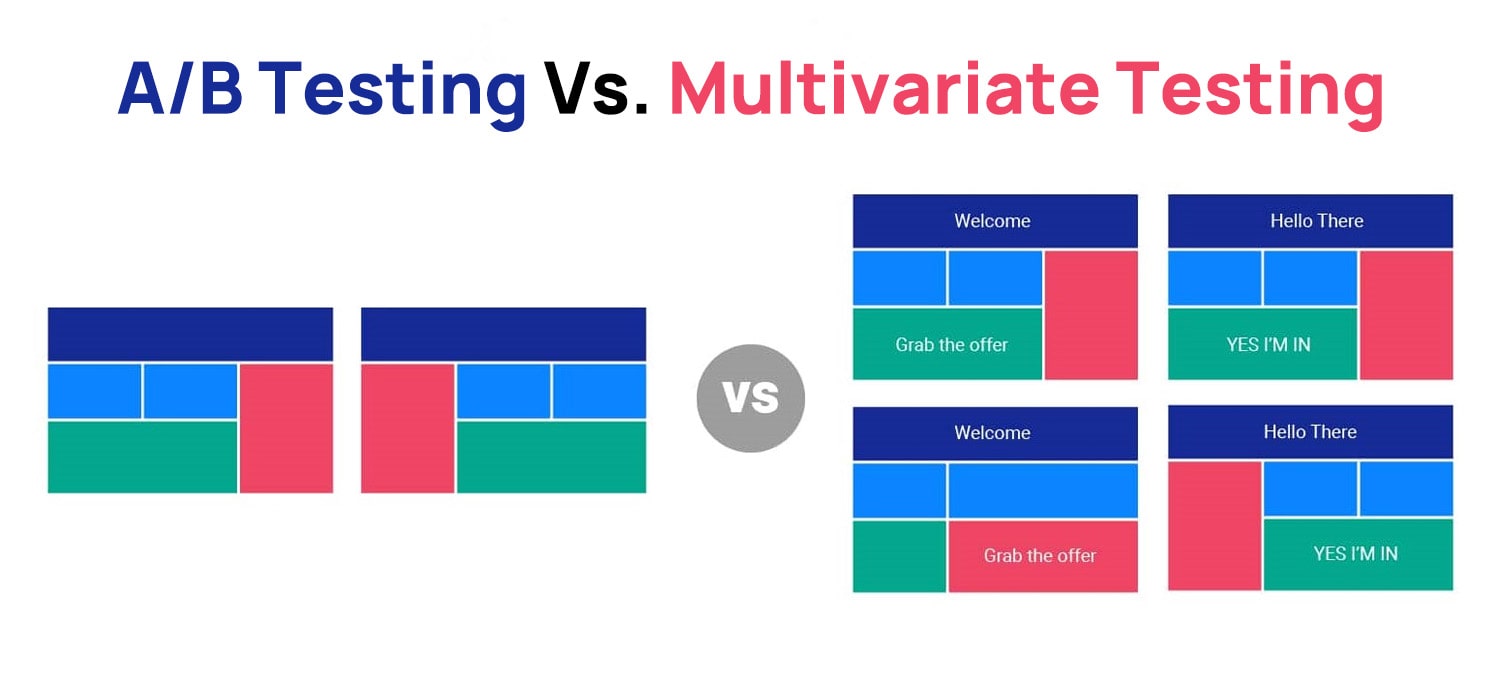
Step 4. Review the Results: Analyze A/B Test Results
Examine the variations in your landing pages with tools like google optimize or other tools listed above.
Test the results on your entire sales funnel. Custom short URLs (or branded links) may be used to collect a multitude of click-based source data — data that can be utilized to evaluate minor but crucial components of any website you create, from buttons to navigation menu options, and much more.
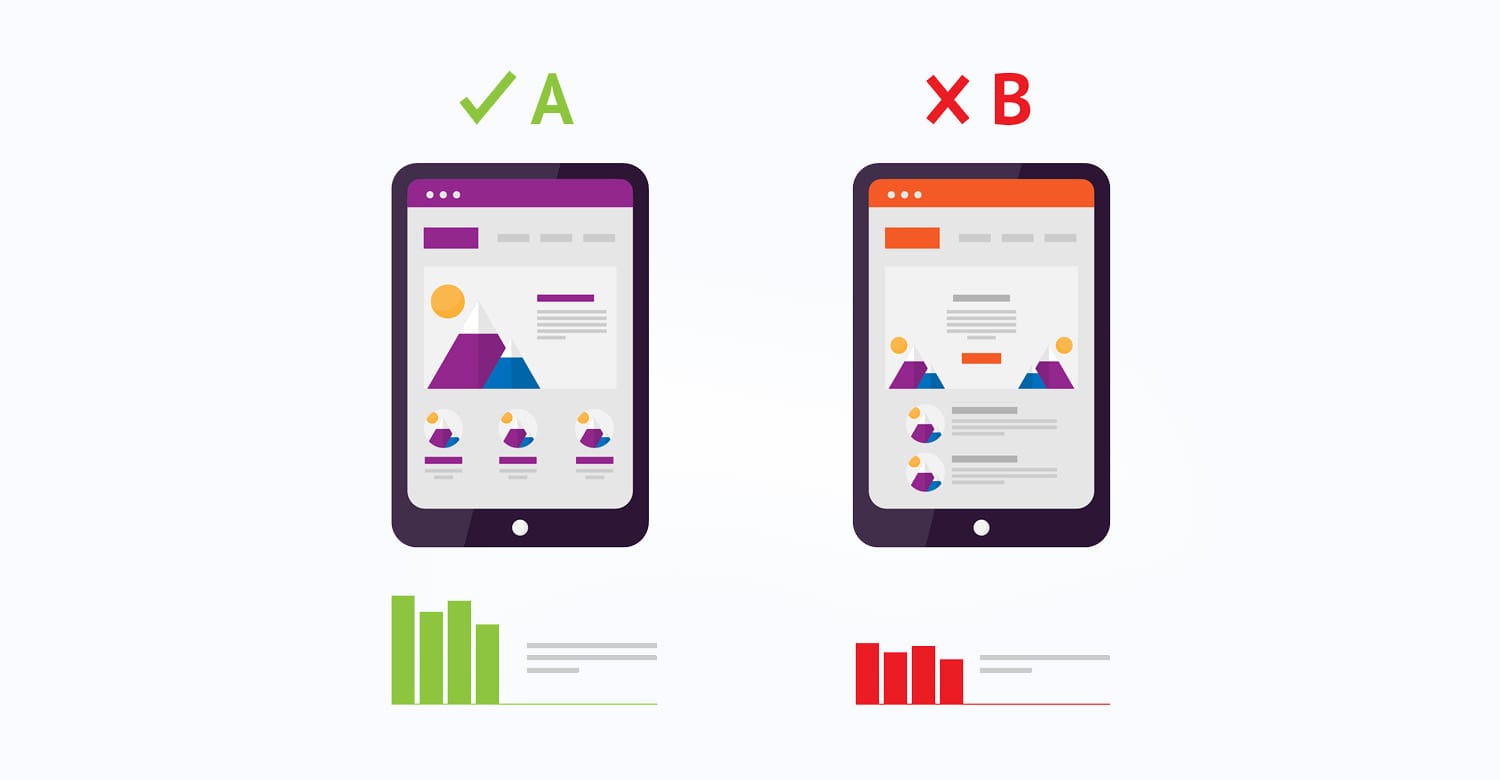
Step 5. Repeat
Repeat the optimization process on a recurring basis. It’s a never-ending process to reshape and smoothen the conversion funnel.
If you want to improve the number of people who download the freemium version of a product, you should set targets for people who get to the landing page/download page and those who actually cross the line, and download.
In whichever testing platform you use, you should be able to see the running test and some sort of indication of whether or not that new variation has increased conversions.
Examine the two numbers (original variation against new variation) carefully, noting the percentage of growth as well as the potential to outperform the original (also in percentages). If that percentage falls short of the ideal range of 90-95 percent, keep tweaking and repeating tests until you attain that level.
Mistakes to Avoid When Running a CRO Campaign
Surprisingly, if your conversion rate ranges between 2% and 5%, you’re doing great. This implies that more than 80% of your website visitors will exit without taking any action. Isn’t it a heartbreaking situation?
Consider how much money you could make if you could convert at least 10% of your website visits. That is over five times your current ROI! Isn’t it enticing?

And, while it is essential to find the best techniques and tactics for your website, it is also critical to detect current conversion optimization issues that, if solved, may improve your conversion rates right now.
Here are a few things to check and avoid those fatal mistakes when running a conversion rate optimization campaign:
- Making decisions based on opinion rather than statistical facts
- Writing sales copy that is incompatible with your company’s objectives
- Prioritizing small tests above large ones
- Too many tests and pop-ups on the same page at the same time
- Paying little attention to fundamental designing materials
- Minimizing the significance of call-to-action buttons
- Not creating a feeling of urgency
- Failure to create business trustworthiness and credibility from the beginning
- Conversion funnels are becoming more complicated.
- Never, at any time during the testing, guess anything.
Conversion Rate Optimization Challenges to Address
Although interest in conversion rate optimization is growing, businesses are unable to completely implement it. Certain obstacles and misunderstandings must be addressed to guarantee its seamless acceptance and deployment.

Here’s the challenges I faced when doing CRO campaigns for many of my clients.
- Politics and people
- Lack of right tools to meet business goals
- Ending an A/B test too early
- Giving up optimization after failed tests
Although interest in conversion optimization is rising, companies are not completely embracing it due to a number of difficulties. These difficulties are either connected to the acceptance of conversion optimization or to its seamless execution.
Solving these issues can assist businesses in deploying conversion optimization efficiently and effectively in order to achieve growth and success.
Wrapping up
Wow, You’ve read and reached the end of this article. And know about all the conversation optimization tips, tools, and best practices for conversion rate optimization. Now, if you don’t want to be one of the marketers who are dissatisfied with their conversion rates, you must alter your digital marketing strategy and follow the conversion optimization tips I have shared.

You can’t just go with the flow and expect to see results. The best way to improve your conversion rates is to start testing and tweaking right away.
If you follow the applicable valuable advice from this blog post to your website, hopefully, it will be a success story for us. Apply those and don’t forget to let us know in the comment section below.
Bella Ciao!
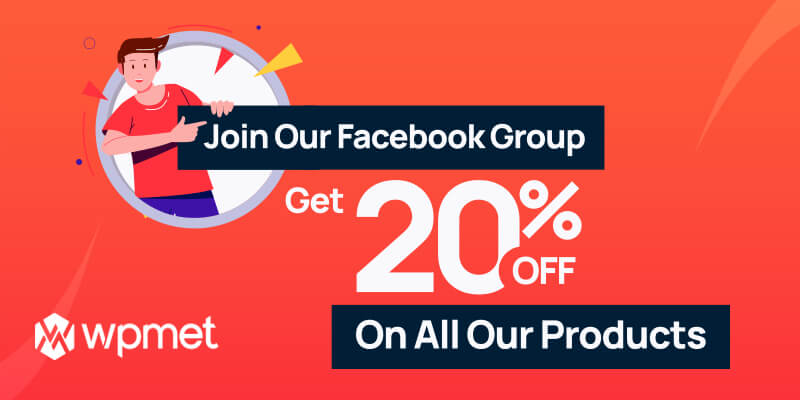

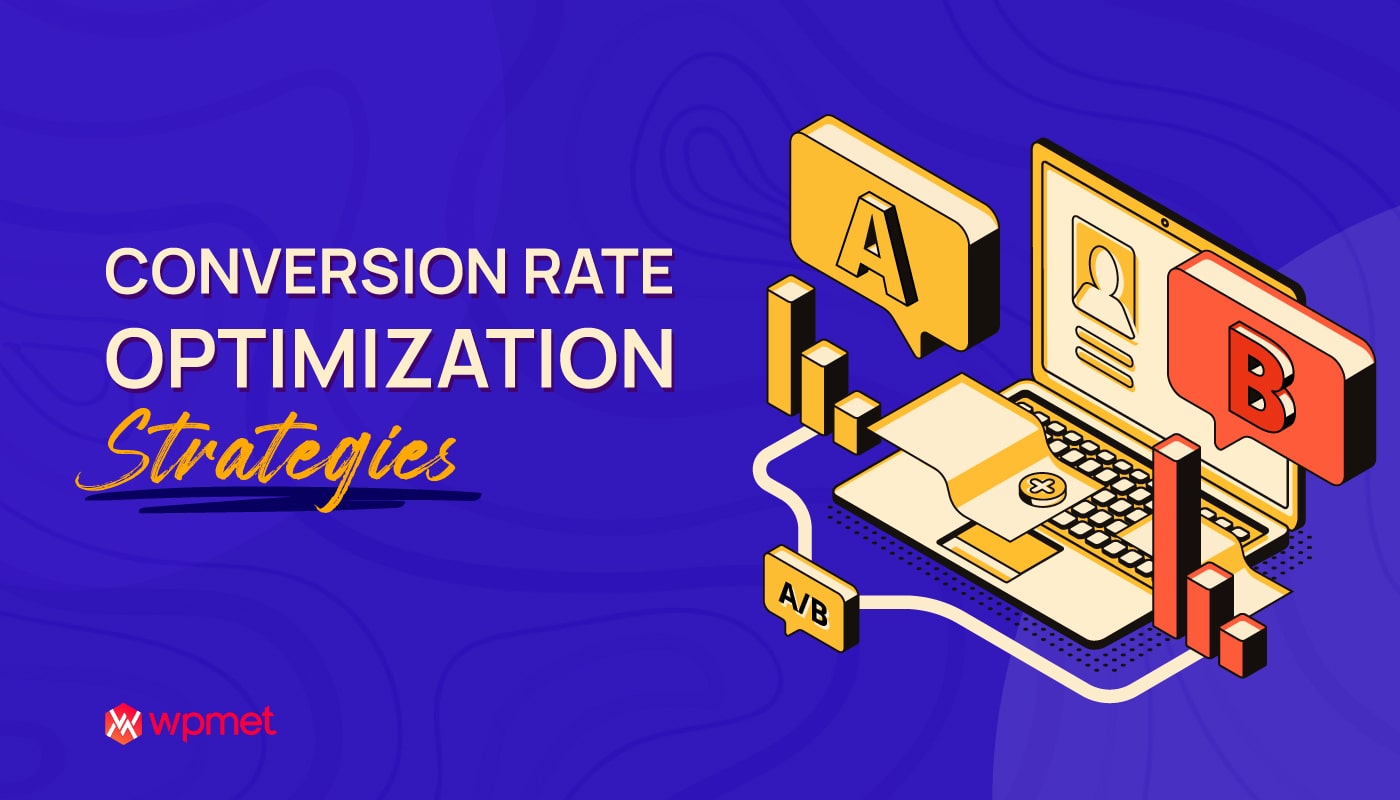
Leave a Reply